Let me write the content now.Transforming your basement into a productive workspace can unlock tremendous potential in your home's underutilized square footage. Recent surveys show basement renovations increased by 30% in 2023, with home offices being the most popular conversion choice . While basement spaces present unique challenges including limited natural light, moisture concerns, and space constraints, they also offer remarkable advantages like enhanced privacy, reduced noise, and separation from household distractions. The added privacy does wonders for your productivity, the primary goal of any home workspace . With thoughtful planning and creative design solutions, your basement can become a sophisticated office environment that rivals any traditional workspace, providing the perfect blend of functionality, comfort, and inspiration for your daily work routine.
1. Multi-Layer Basement Office Lighting Solutions
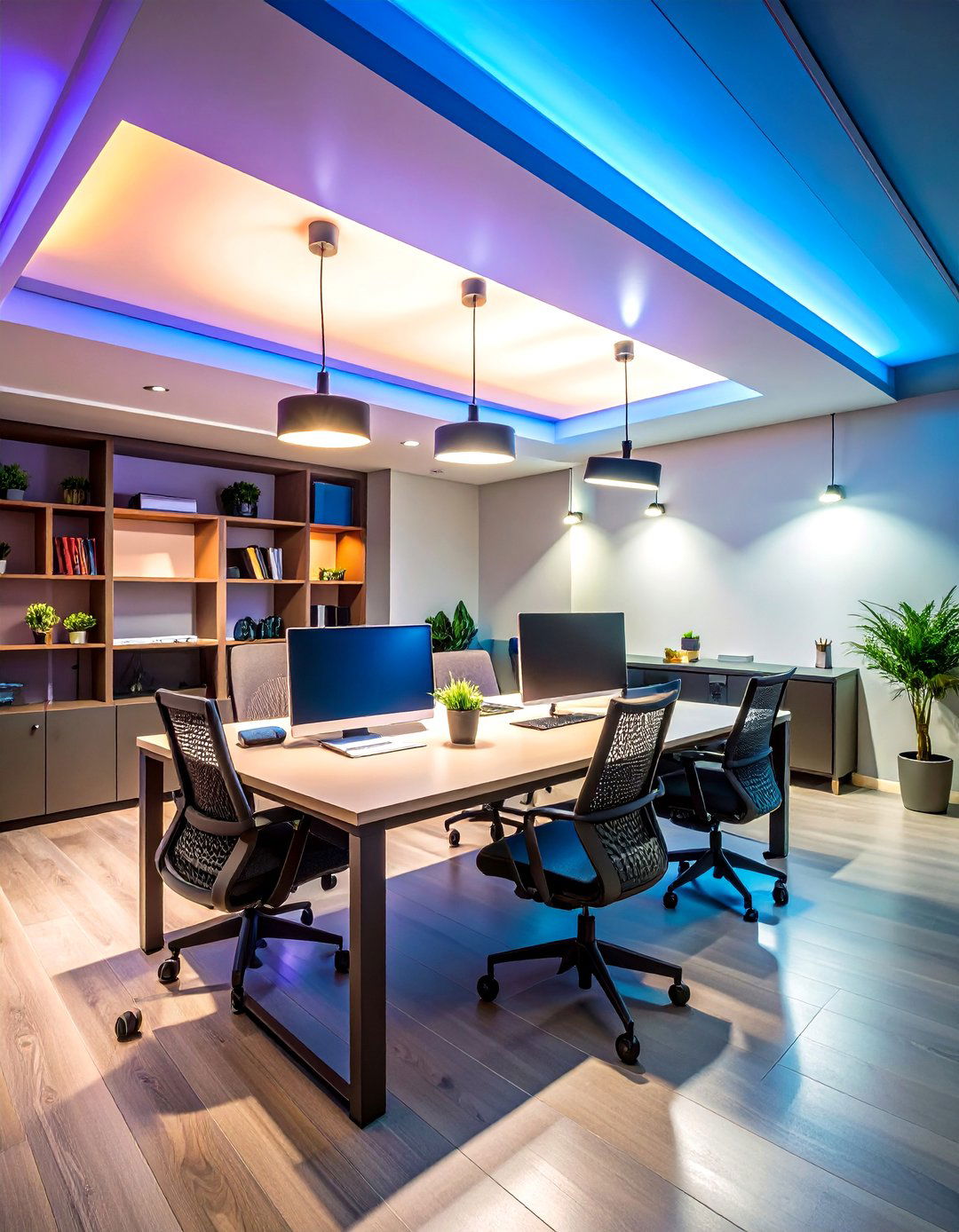
Even if you plan to work in a windowless basement, manufactured light does wonders, and the more you have, the better . Create a comprehensive lighting scheme that combines ambient, task, and accent lighting to transform your basement office from dreary to dynamic. Install recessed LED ceiling lights for general illumination, add adjustable desk lamps for focused work, and incorporate wall sconces or floor lamps for warm ambient lighting. Task lighting is the most important home office lighting idea , so position adjustable fixtures directly over your work surface. Layer different light sources throughout the room to eliminate harsh shadows and create an inviting atmosphere that makes you want to spend time in your basement office workspace.
2. Modular Basement Office Furniture Systems
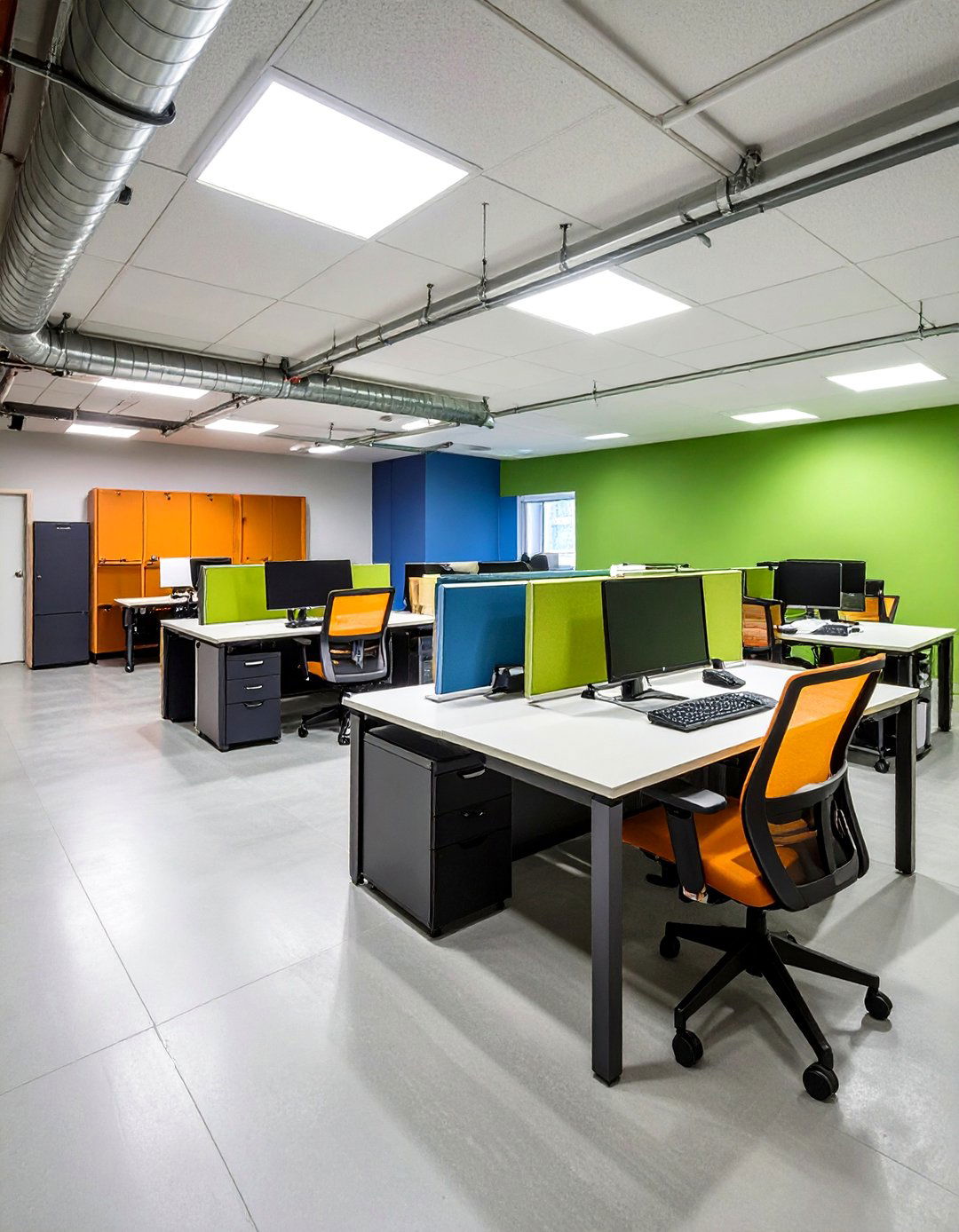
In a multi-purpose basement, modular furniture is a game-changer . Invest in flexible furniture pieces that can be easily reconfigured as your work needs change or when your basement serves multiple functions. Consider desks with removable sections, stackable storage units, and chairs that fold away when not needed. Modular office systems typically save 15-30% of floor space compared to traditional fixed furniture arrangements . This approach allows you to quickly transform your basement office space for different activities, whether you need a large surface for project work, a cozy reading nook, or space for exercise equipment. Modular systems maximize efficiency while maintaining the professional appearance essential for productive basement office environments.
3. Smart Basement Office Storage Solutions
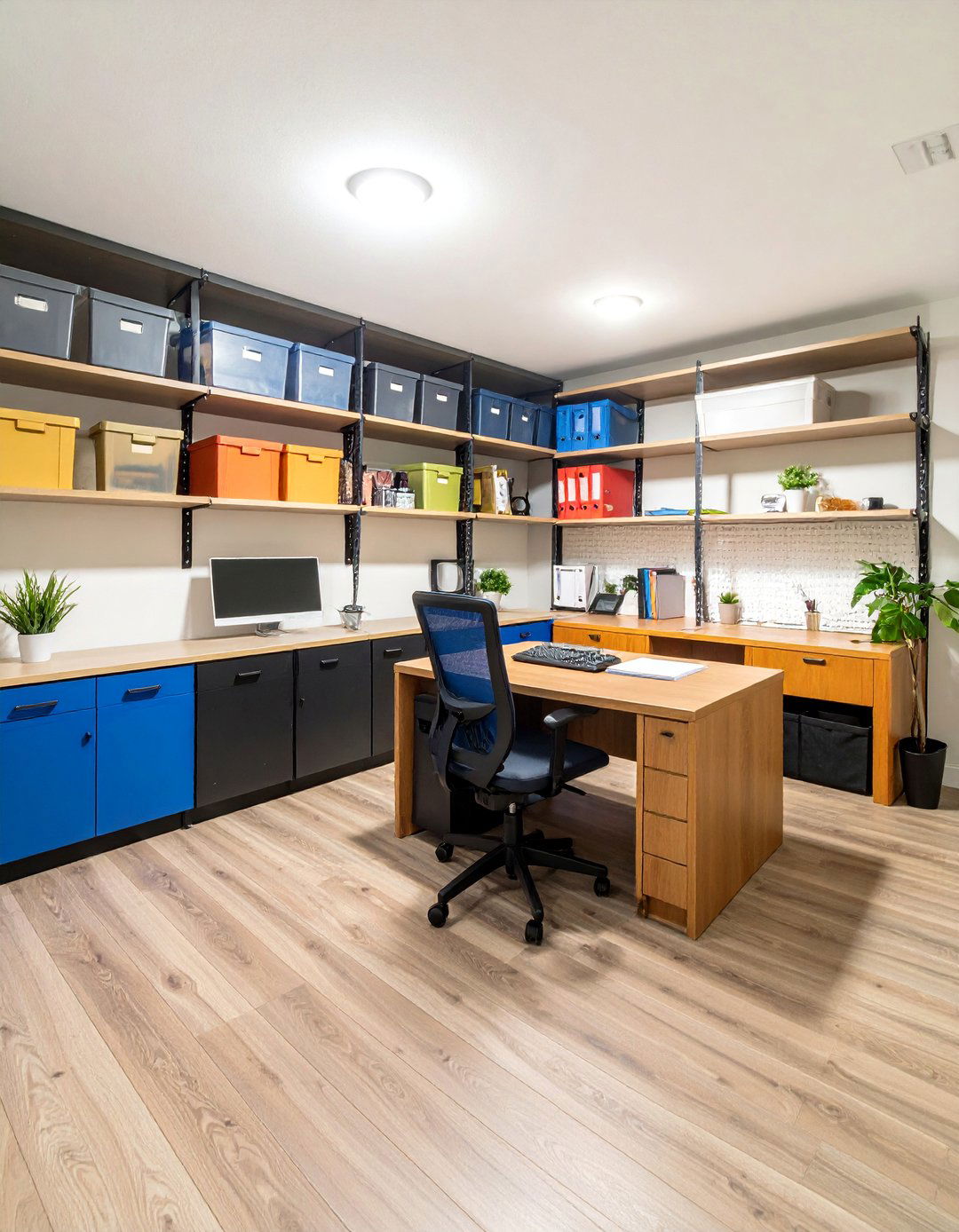
Transform your basement office clutter into organized efficiency with intelligent storage systems that maximize every square inch. Install floor-to-ceiling shelving units along walls to store books, supplies, and equipment vertically. Built-in basement storage saves on floor space because you don't need to incorporate freestanding furniture to get organized . Use labeled clear bins for easy visibility of contents, and incorporate pegboards for frequently used tools and supplies. Consider storage ottomans that double as seating and filing cabinets that can support a printer or additional work surface. Wall-mounted cabinets keep essentials within reach while maintaining clean lines in your basement office design.
4. Under-Stair Basement Office Nooks
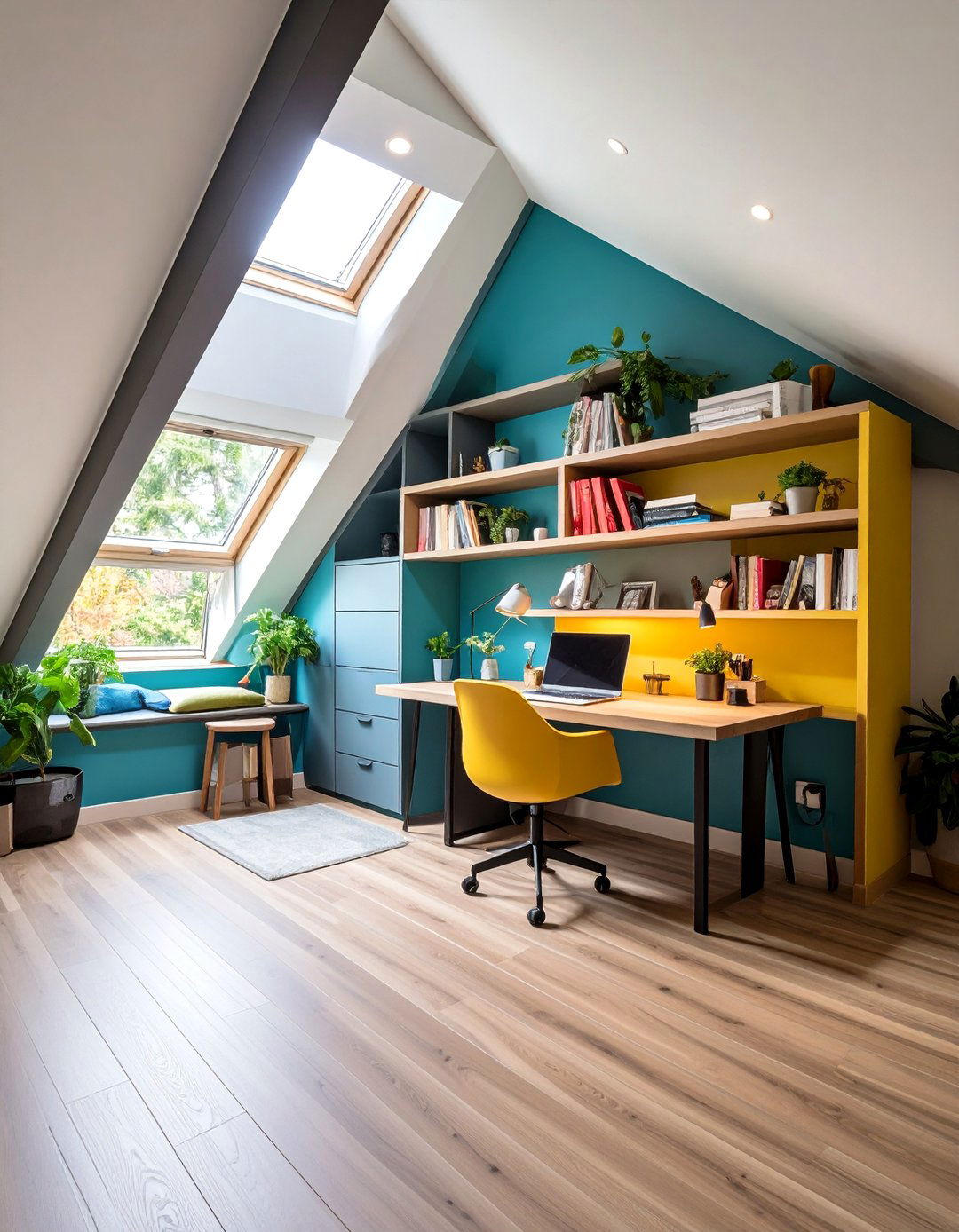
Your basement stairs may seem like an annoying space sucker, but you can use them to your advantage . Convert the area beneath your staircase into a cozy workstation or additional storage space. This often-overlooked area can accommodate a compact desk, floating shelves for books and supplies, and even a small chair for a reading corner. Built-in storage under the stairs is a practical and visually appealing basement storage idea . Install custom cabinetry that follows the slanted roofline, creating a unique architectural feature while maximizing functionality. This creative basement office solution proves that even the most awkward spaces can become productive work areas with thoughtful design.
5. Basement Office Color Psychology

Adopting a bright color palette in your basement home office design can boost the mood and feel of this typically dark room in a home . Choose light, energizing colors like soft whites, pale blues, or warm grays to make your basement office feel more spacious and welcoming. Consider painting an accent wall in a bold color to add personality and visual interest without overwhelming the space. Neutral colors: Soft grays, gentle beiges, and subtle blues can also create a light and airy atmosphere . The psychological impact of color directly affects productivity and mood, so select hues that energize and inspire you throughout your workday in your basement office environment.
6. Basement Office Acoustic Solutions
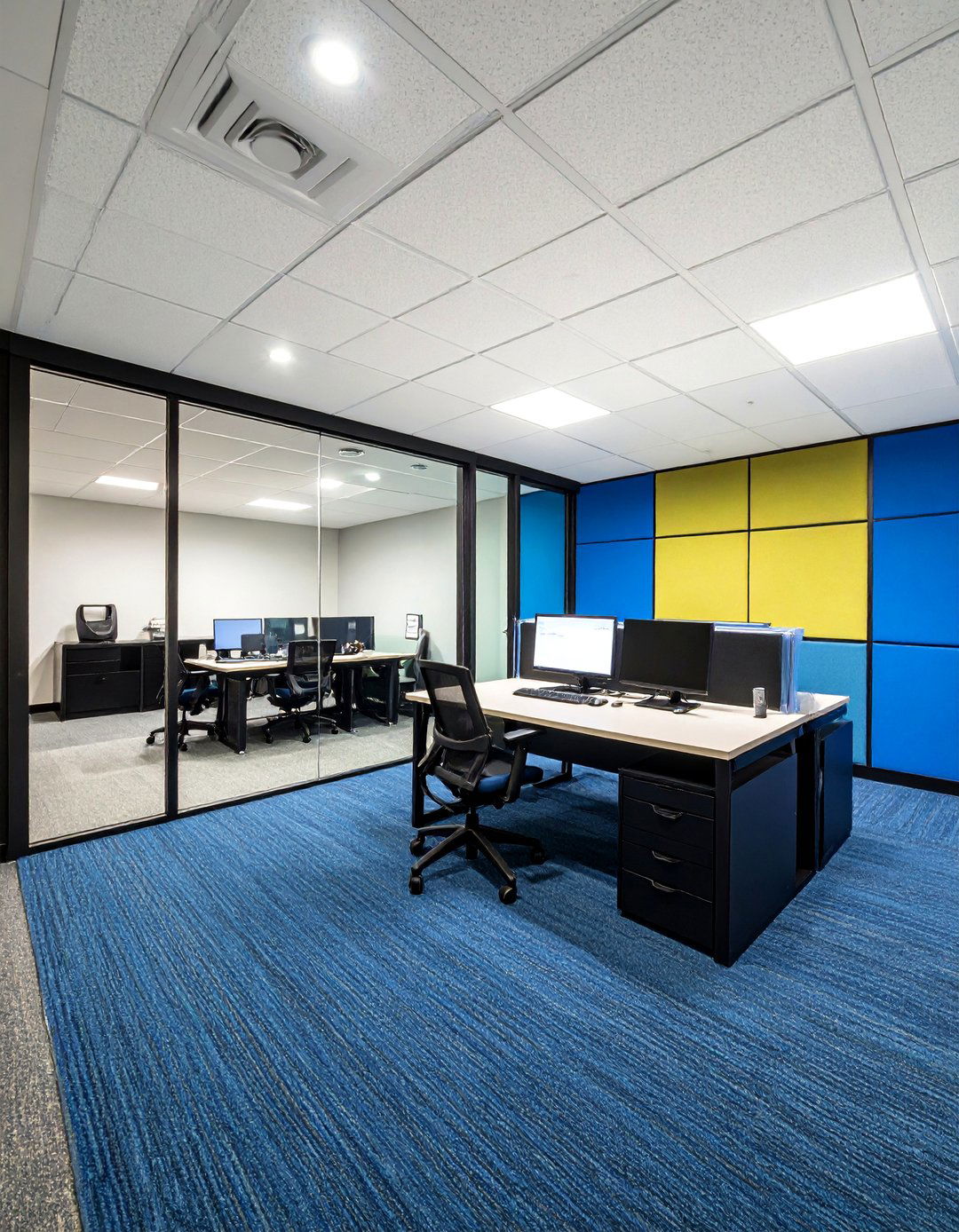
One of the cons of remote work from home is distractions. If your basement has multiple rooms and doubles as a family area, or if your basement sits underneath a noisy area of the home, soundproofing can help you maintain focus . Install acoustic panels on walls to reduce echo and outside noise, creating a more professional environment for video calls and concentrated work. Consider sound-absorbing materials like fabric wall coverings, thick rugs, or specialized acoustic tiles. Frameless glass partitions typically provide 30-35 STC (Sound Transmission Class) rating for moderate sound isolation . These solutions help transform your basement office into a quiet sanctuary where you can maintain focus and productivity without external distractions.
7. Basement Office Air Quality and Climate Control

Address the unique environmental challenges of basement offices by prioritizing air quality and temperature control. A dehumidifier is an addition that will make your life in the basement office a lot more comfortable . Install a quality dehumidifier to prevent moisture buildup and maintain optimal humidity levels between 30-50%. Consider adding an air purifier to improve air circulation and remove potential allergens. HEPA air purifiers should provide 4-5 air changes per hour for basement spaces . Ensure proper insulation to maintain comfortable temperatures year-round, and consider installing a mini-split system for independent climate control in your basement office space.
8. Biophilic Basement Office Design
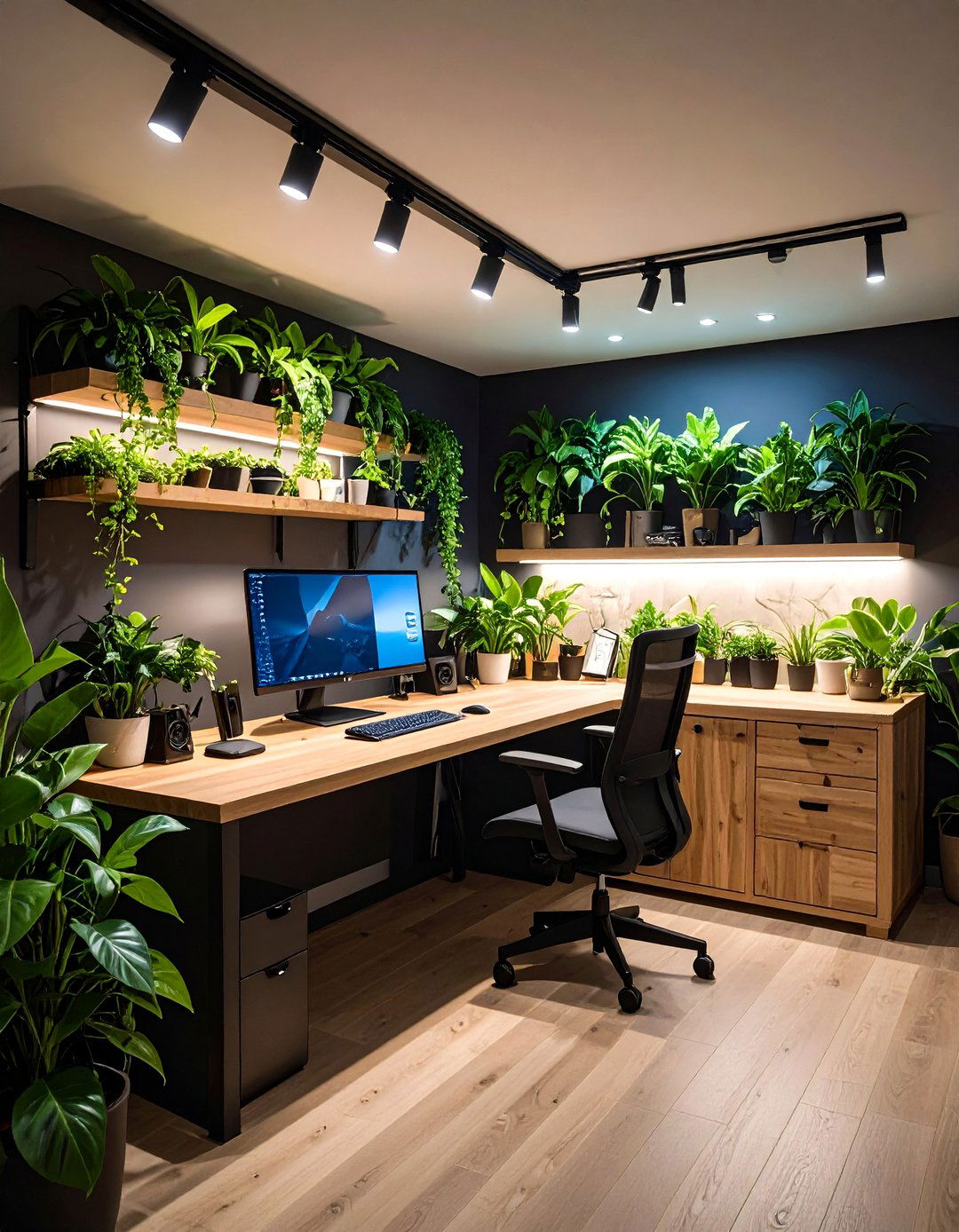
Never underestimate the power of greenery. Plants help purify the air and add a touch of tranquility to your basement office . Incorporate nature-inspired elements to create a healthier, more inspiring workspace despite limited natural light. Choose low-light plants like snake plants, pothos, or philodendrons that thrive in basement conditions. Snake plants, philodendrons, and pothos are great choices for low-light basement offices . Add natural materials like wood desk surfaces, bamboo storage solutions, or stone accents to create warmth and connection to nature. Consider installing plant lights if natural light is insufficient, ensuring your green companions remain vibrant and contribute to better air quality in your basement office.
9. Basement Office Tech Integration
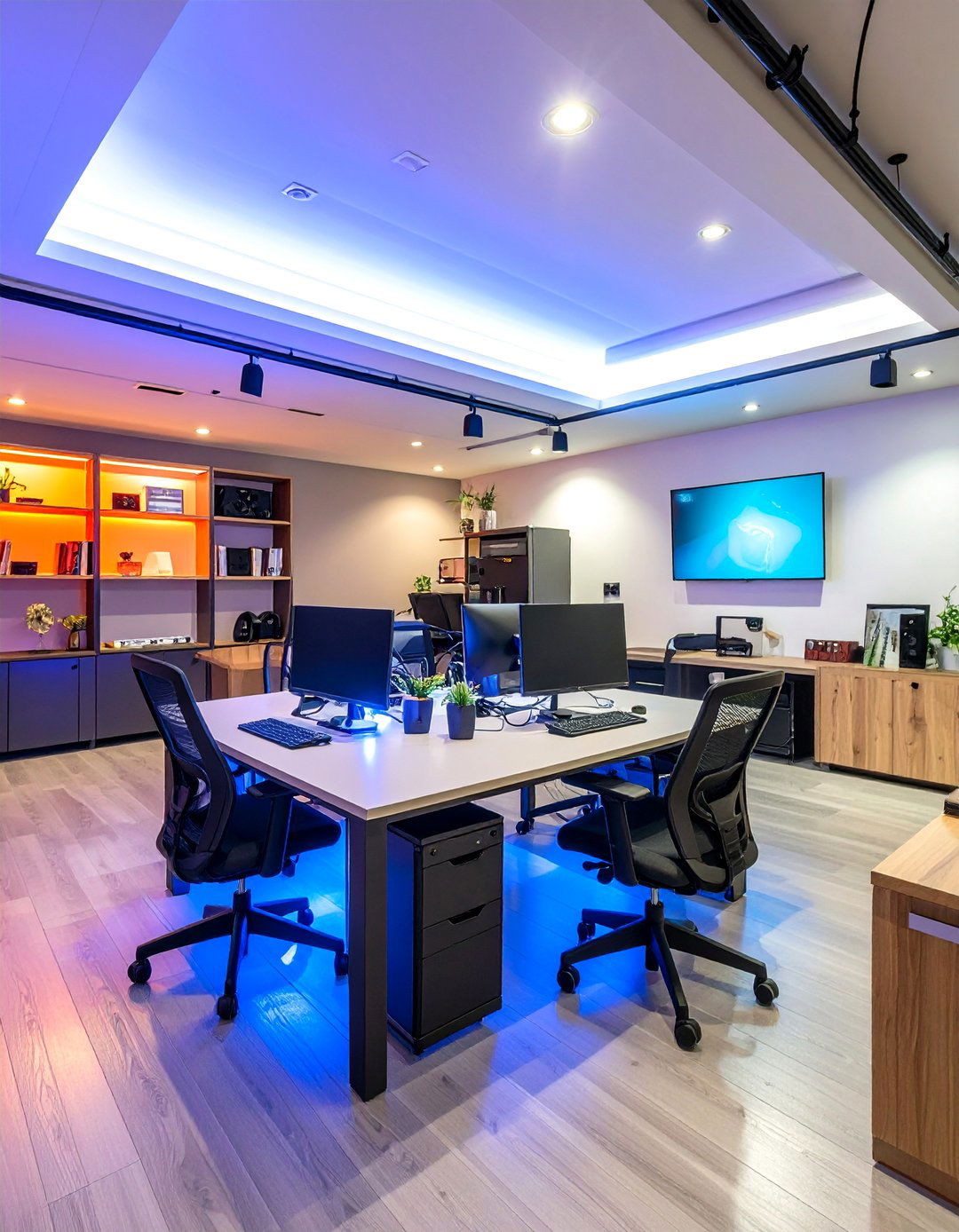
Ensure your basement has the power outlets you need and is tech-friendly. Ensure you have strong Wi-Fi, and consider smart home devices to control lighting and temperature for the ultimate convenience and efficiency . Plan your electrical layout carefully to accommodate multiple devices, monitors, and equipment without relying on extension cords. Install dedicated circuits for high-power equipment and ensure adequate internet connectivity with WiFi boosters or mesh systems if needed. Consider smart lighting systems that automatically adjust based on time of day, and integrate wireless charging stations into your desk setup. Your basement office should seamlessly support all your technology needs while maintaining a clean, organized appearance.
10. Basement Office Ergonomic Workstation
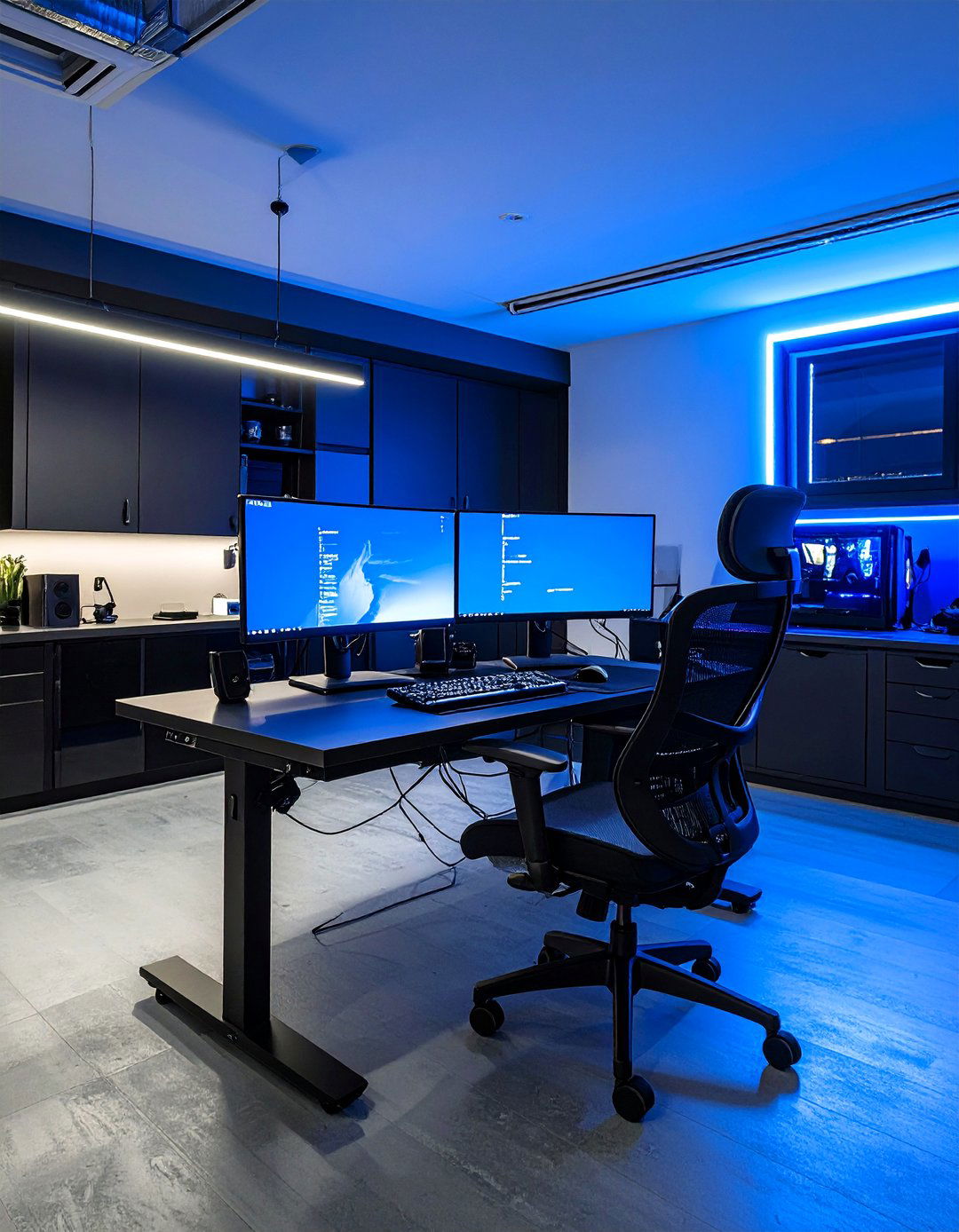
Prioritize comfort with a quality office chair. Your desk and chair are where you spend most of your time, so choose them wisely to ensure your workspace is a place you can work all day long . Invest in an adjustable standing desk to promote healthy posture and reduce the risks associated with prolonged sitting. Choose an ergonomic chair with proper lumbar support, adjustable height, and armrests. Position your monitor at eye level to prevent neck strain, and ensure your keyboard and mouse are at comfortable heights. Wall mounting the monitors slightly above eye level also helps with proper posture = less neck pain . Your basement office ergonomics directly impact your productivity and long-term health.
11. Basement Office Moisture Protection

Protect your valuable office equipment and documents from basement moisture with proactive waterproofing and storage solutions. Use sealed storage containers for important papers and invest in a quality dehumidifier to maintain optimal humidity levels. Consider raised flooring or waterproof flooring materials like luxury vinyl plank or ceramic tile. Moisture and humidity issues require dehumidifiers, vapor barriers, or raised flooring, with costs ranging from $800-$5,000 . Install proper drainage around your basement office area and address any existing moisture issues before setting up your workspace. Waterproof storage solutions and climate control systems ensure your basement office remains functional and professional regardless of weather conditions.
12. Basement Office Natural Light Maximization
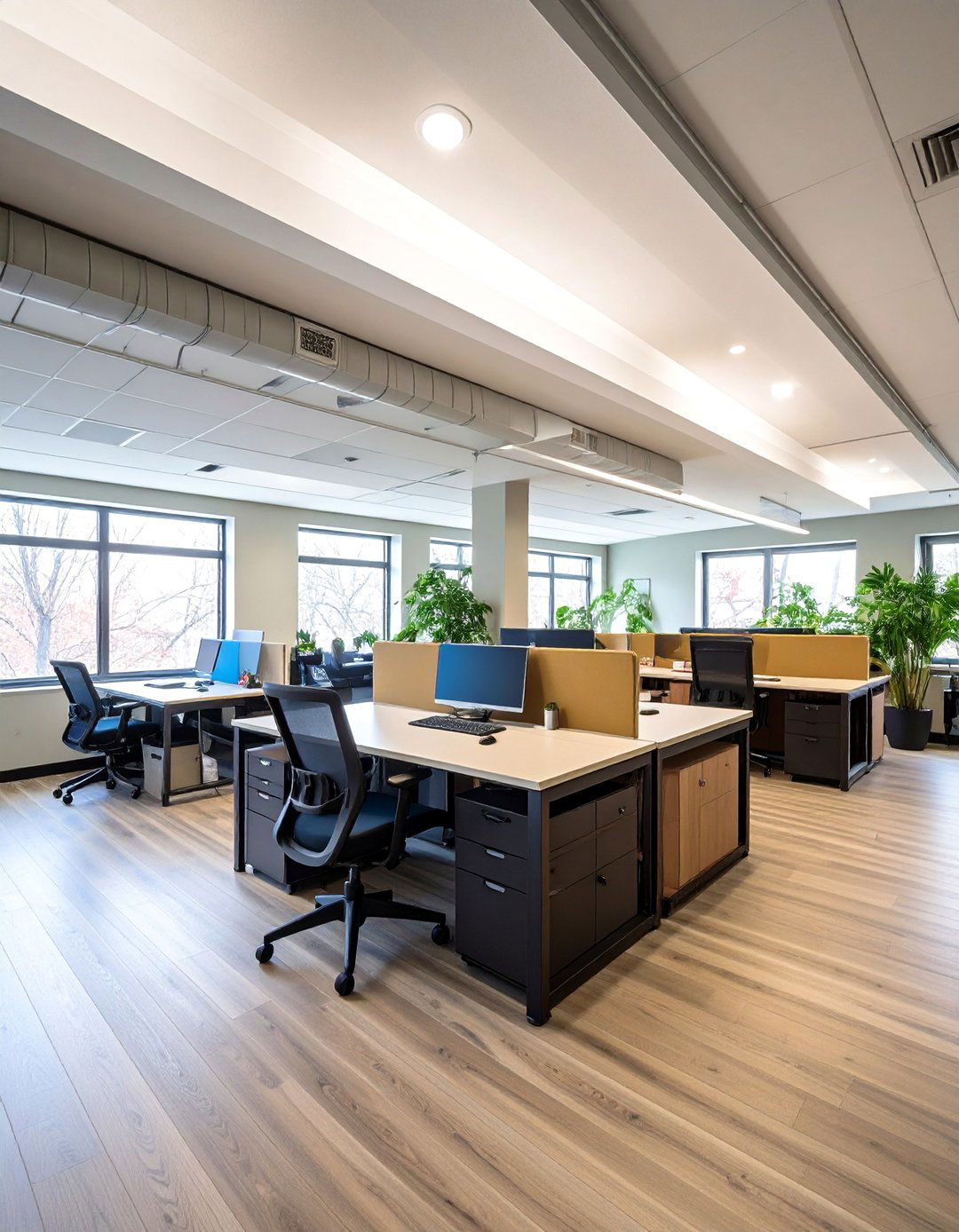
Make maximum use of any upper windows in the basement and let natural light complement the artificial illumination . Clean existing windows regularly and remove any obstructions that might block precious natural light. Consider installing window wells or light wells to channel more sunlight into your basement office. Limited natural light can be addressed with light wells, solar tubes, or smart lighting systems, typically costing between $500-$3,000 . Use mirrors strategically to reflect and amplify available light throughout your space. Light-colored paint on walls and ceilings can also help bounce natural light around your basement office, making it feel brighter and more spacious.
13. Basement Office Flexible Zones
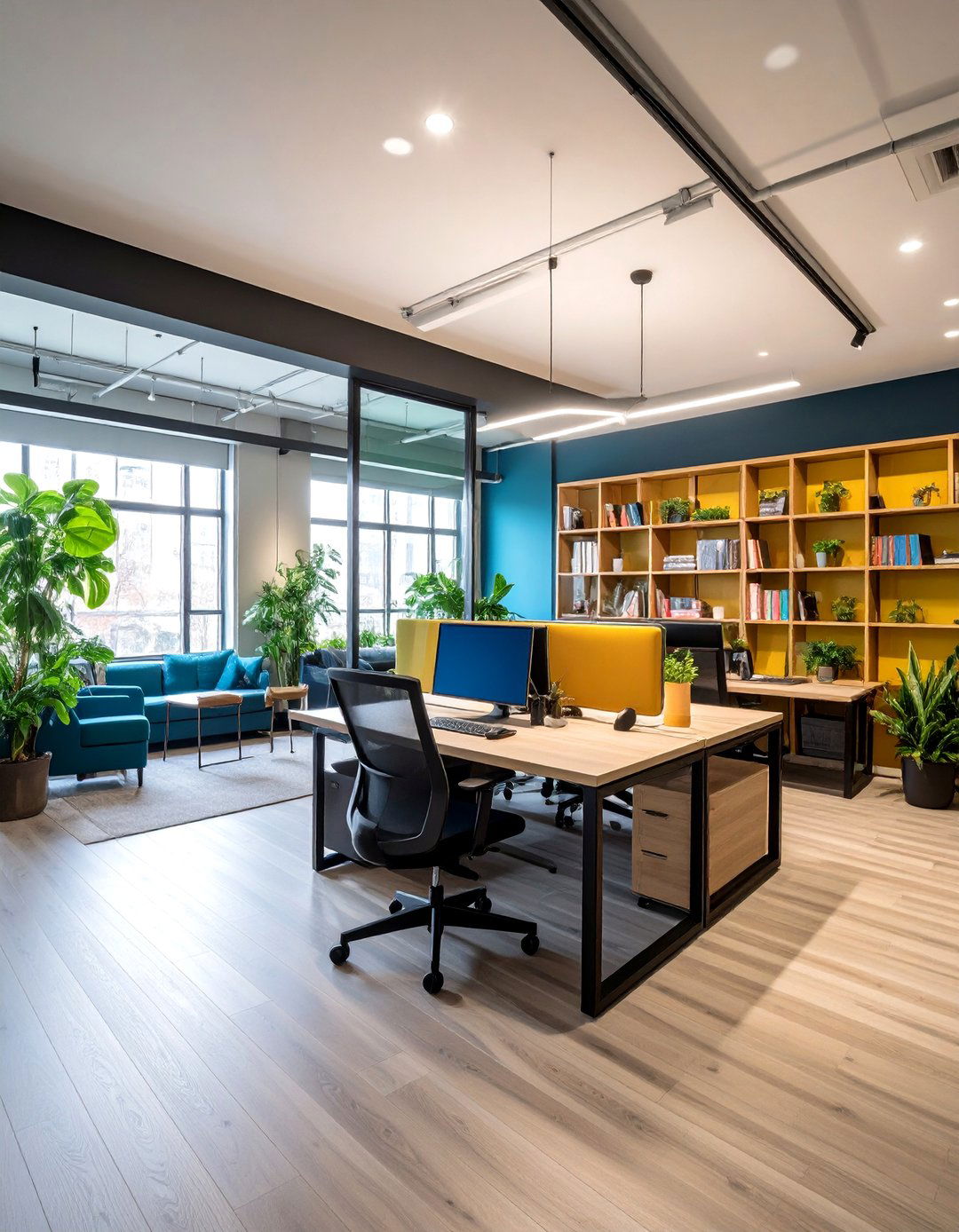
Glass wall partitions separate your office area from other basement functions while maintaining an open, spacious feel . Create defined work zones within your basement office using furniture arrangements, room dividers, or decorative screens. Establish separate areas for focused work, video calls, storage, and relaxation. This zoning approach allows you to mentally separate different types of work activities while maintaining flexibility in your basement office layout. Consider using bookcases, plants, or decorative panels as natural dividers that don't block light or make the space feel cramped. Flexible zoning maximizes functionality while maintaining an open, professional atmosphere.
14. Basement Office Built-in Solutions
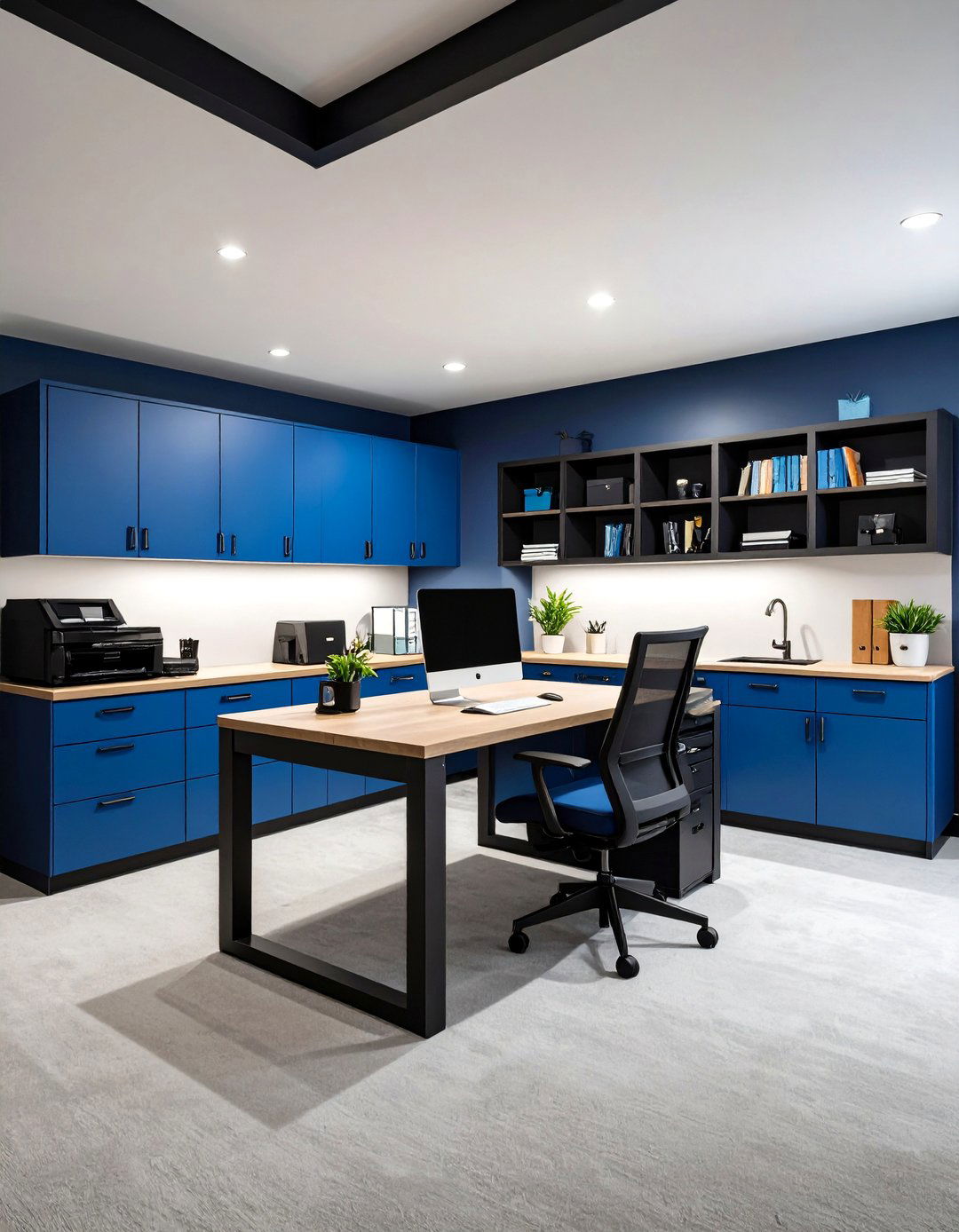
Built-in basement storage saves on floor space because you don't need to incorporate freestanding furniture to get organized . Custom built-in desks, shelving, and storage solutions maximize your basement office efficiency while creating a polished, professional appearance. Built-ins can be designed to work around basement obstacles like support posts, ductwork, or irregular ceiling heights. Consider incorporating file storage, printer stations, and equipment housing into your built-in design. These permanent solutions add value to your home while creating a sophisticated basement office environment that feels intentional and well-planned rather than makeshift.
15. Basement Office Ceiling Solutions
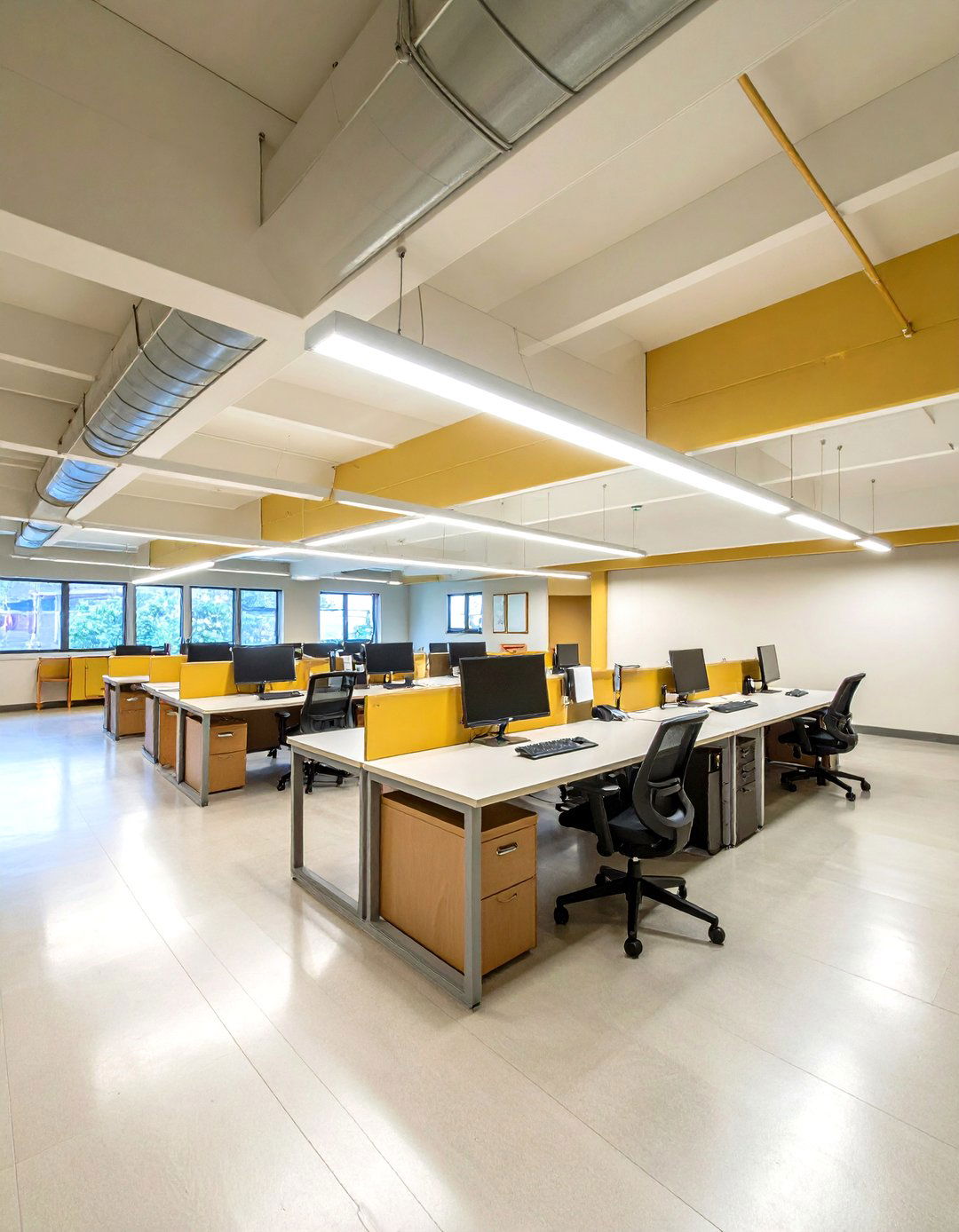
Don't forget about the ceiling when designing the space. Basement offices can be fun, too, and covering the fifth wall of the room is one way to go bold and experiment a little . Address low ceilings creatively by painting them in light colors or installing suspended ceiling tiles for a finished appearance. Keeping floor joists exposed can give the basement a sense of height and openness . Consider exposed beam designs for an industrial look, or install track lighting systems that don't compromise headroom. Proper ceiling treatment can dramatically improve the feel of your basement office space, making it feel more like a professional environment rather than an unfinished basement.
16. Basement Office Temperature Control
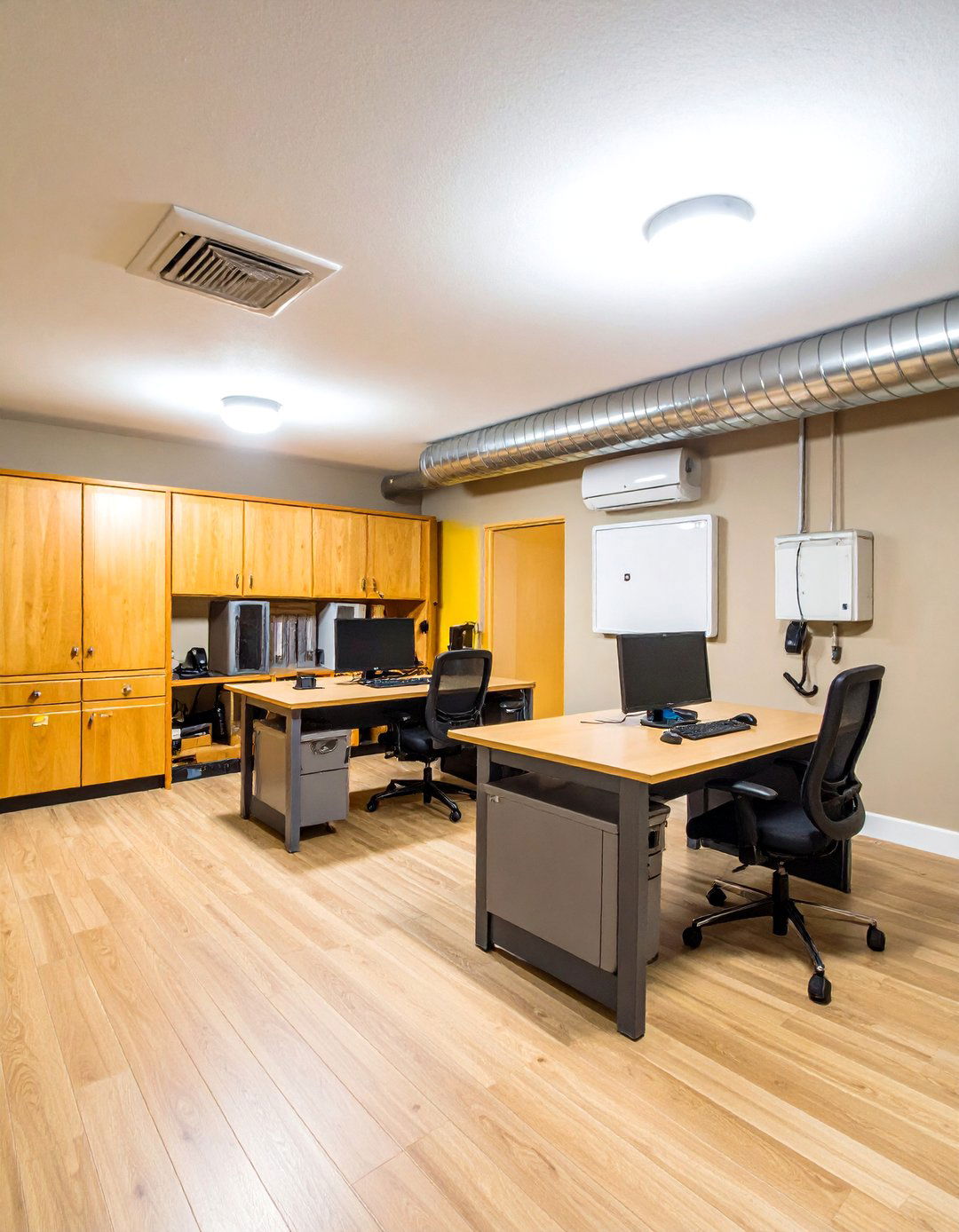
A basement can be a chilly part of the home, but some can also be too warm and lack air circulation. HVAC systems help with all of these issues, but portable heaters can help keep those toes warm in winter months . Install proper insulation to maintain comfortable temperatures year-round and consider zoned heating and cooling systems for independent climate control. Temperature regulation could involve zoned HVAC, mini-splits, or improved insulation ($1,500-$8,000) . Space heaters or fans can provide supplemental comfort on extreme days. Maintain consistent temperatures to ensure your basement office remains a comfortable, productive workspace regardless of seasonal weather changes.
17. Basement Office Security and Privacy
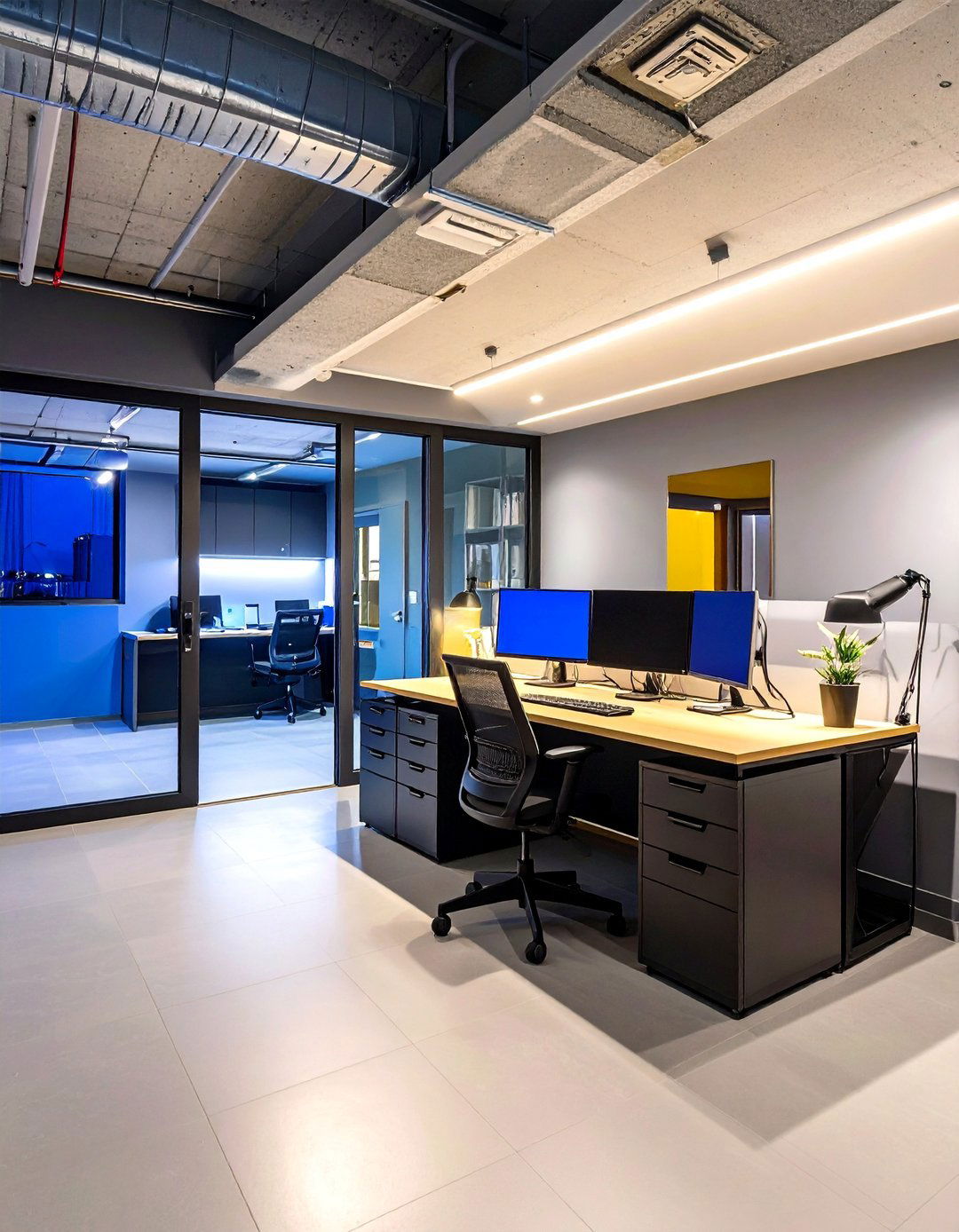
If you plan to create a home office inside your basement, you're in luck. You'll find the added privacy does wonders for your productivity, the primary goal of any home workspace . Enhance security with proper lighting around basement entrances, secure locks on basement doors, and consider window security films or bars if applicable. Install a separate entrance if possible to create professional client access without disturbing household activities. Consider soundproofing measures to ensure confidential calls and meetings remain private. Your basement office should feel secure and professional, providing the privacy needed for focused work and sensitive business communications.
18. Basement Office Flooring Solutions
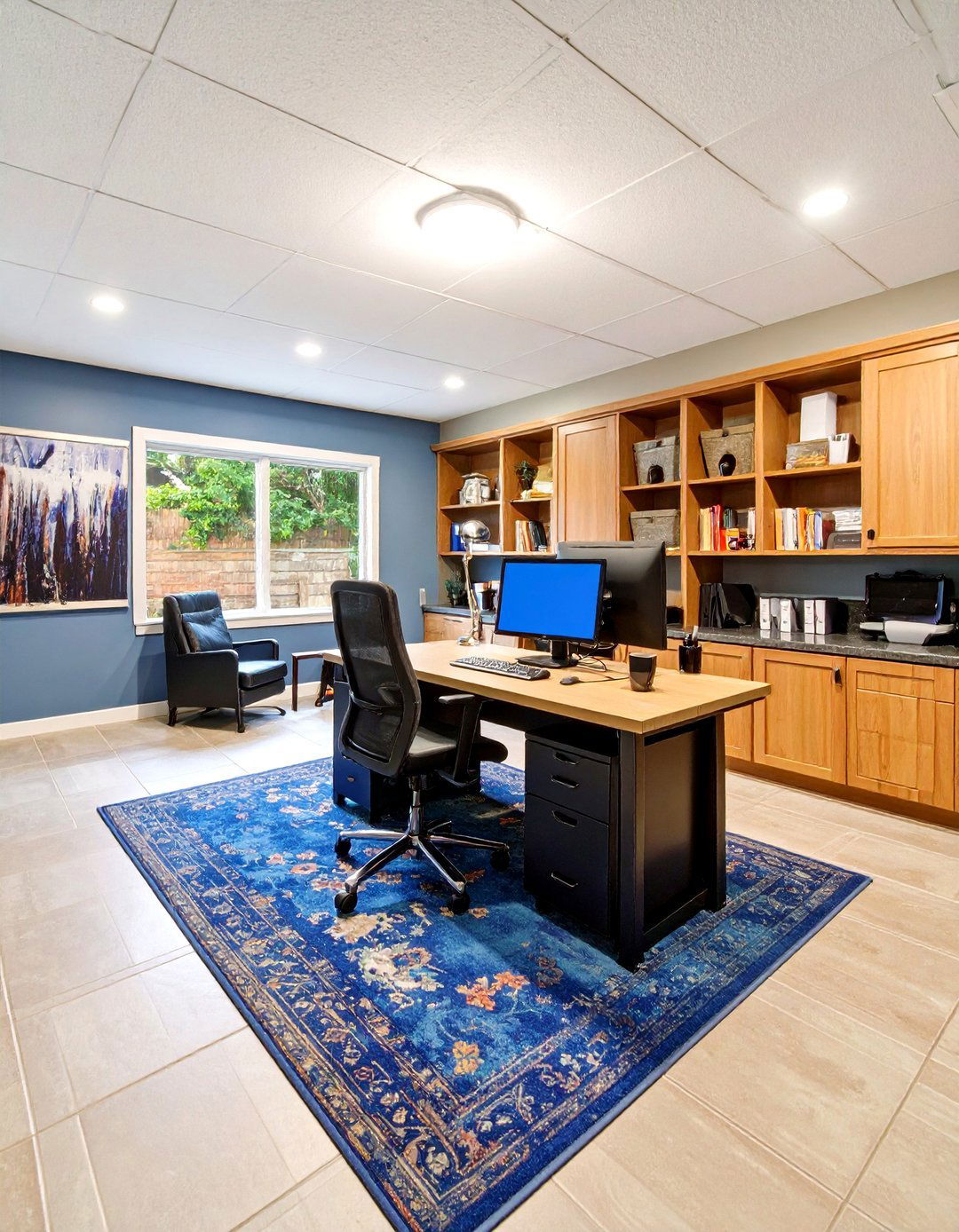
If you have an unfinished basement, using carpeting or wood flooring with an area rug adds warmth – both in temperature and look . Choose moisture-resistant flooring options like luxury vinyl plank, ceramic tile, or properly sealed concrete for durability and easy maintenance. Opt for durable flooring, such as laminate or tile, that can withstand spills and is easy to clean . Area rugs can add warmth and sound absorption while defining your workspace within the larger basement area. Consider radiant heating systems under flooring for year-round comfort. Having a rug lends warmth both style wise and physically . Quality flooring transforms your basement office from utilitarian to professional.
19. Basement Office Multi-Purpose Design
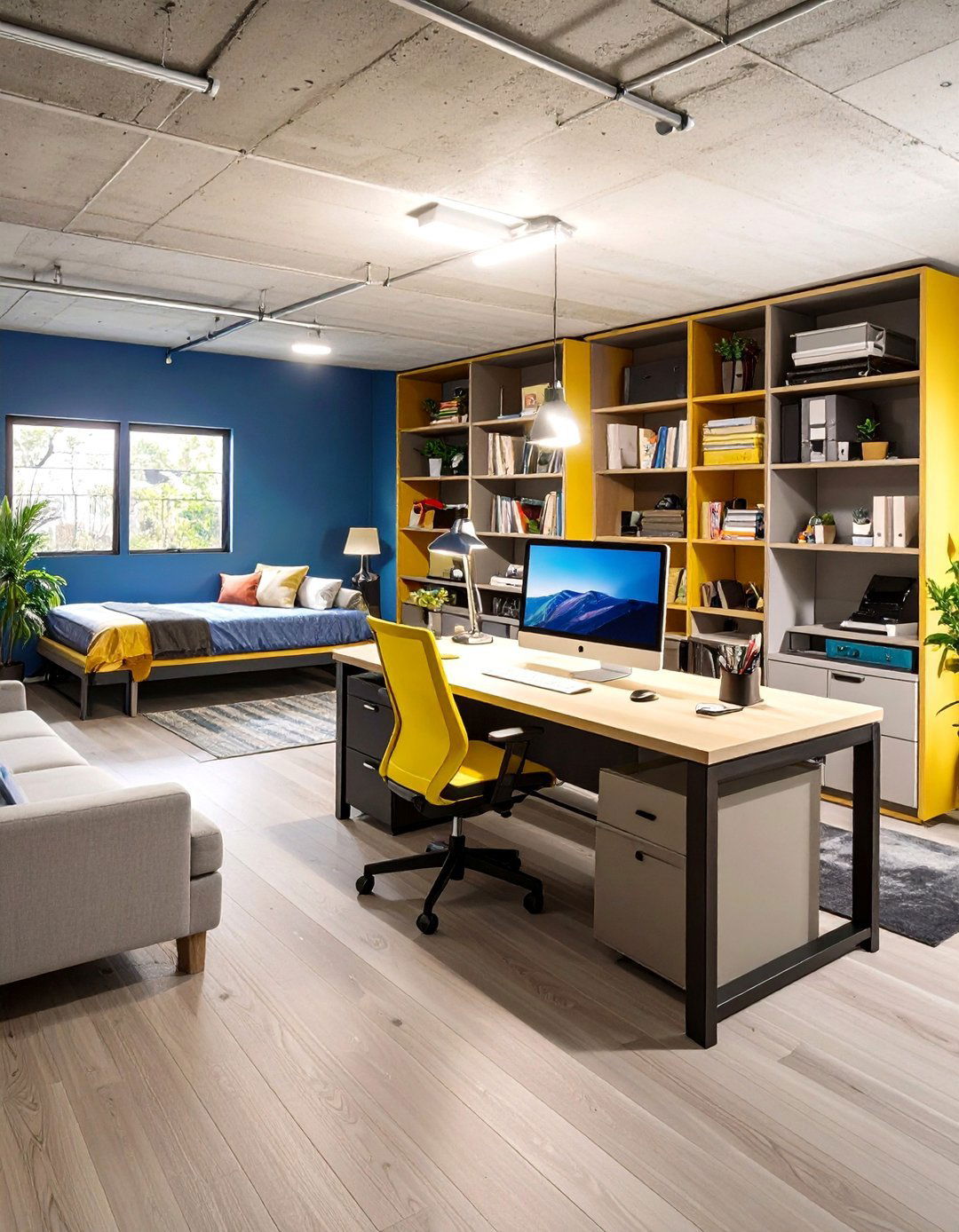
A basement is valuable space in a home, and not just for you. It may be a game room, laundry area, or utility room . Design your basement office to serve multiple functions efficiently using convertible furniture and smart storage solutions. Consider a murphy desk that folds away when not in use, or a conference table that doubles as a craft space. A foldable desk, chair, sofa, bed, and even movable walls provide flexible spaces for work without sacrificing the other functions the room serves . Use furniture on casters for easy reconfiguration, and incorporate storage that accommodates both office supplies and other basement functions. This flexibility maximizes your basement's utility while maintaining a professional workspace.
20. Basement Office Inspiration and Personalization

Add charm to your basement office by going beyond the basics and adding eye-catching artwork, sconces, vases, and other accent pieces. Just because you're sitting down to work doesn't mean you can't be surrounded by beautiful things . Create an inspiring environment with personal touches that motivate and energize you throughout the workday. Display meaningful artwork, family photos, or motivational quotes that reflect your personality and professional goals. Brighten up your basement office with the addition of decorative lighting, fresh blooms, and colorful art . Consider a vision board or inspiration wall to keep your goals visible. Your basement office should feel uniquely yours while maintaining the professionalism needed for productive work.
Conclusion:
Creating an exceptional basement office requires thoughtful planning that addresses both practical challenges and design aspirations. As an interior designer and fellow home office user, I've learned that a good-looking office space takes productivity further because you want to be there longer . By implementing these diverse basement office ideas, you can transform your lower level into a sophisticated workspace that rivals any traditional office environment. From strategic lighting solutions and climate control to flexible storage systems and personalized design elements, each component contributes to a basement office that enhances productivity while providing the privacy and focus essential for professional success. Your basement office investment will not only improve your work-from-home experience but also add significant value to your home's overall functionality and appeal.


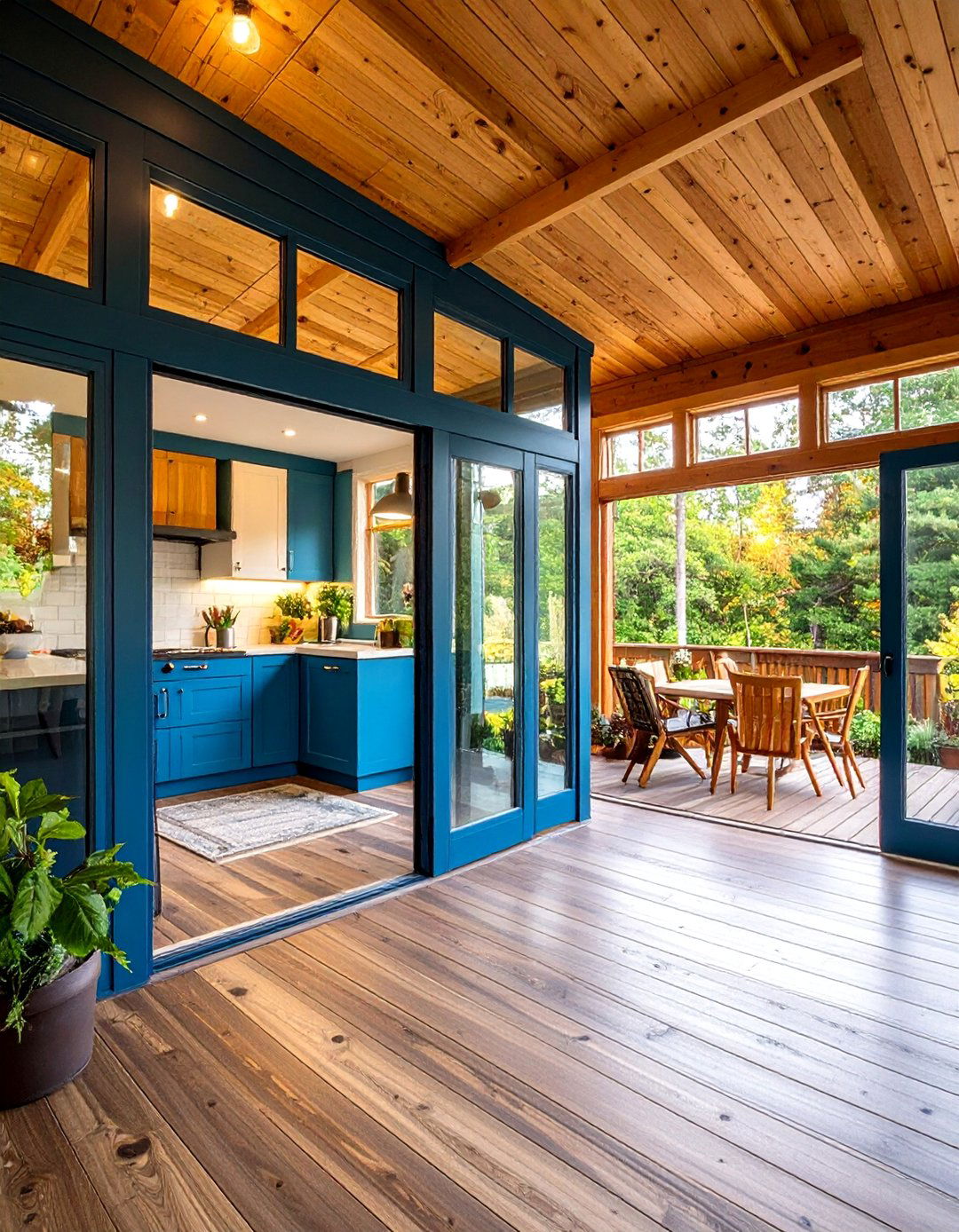
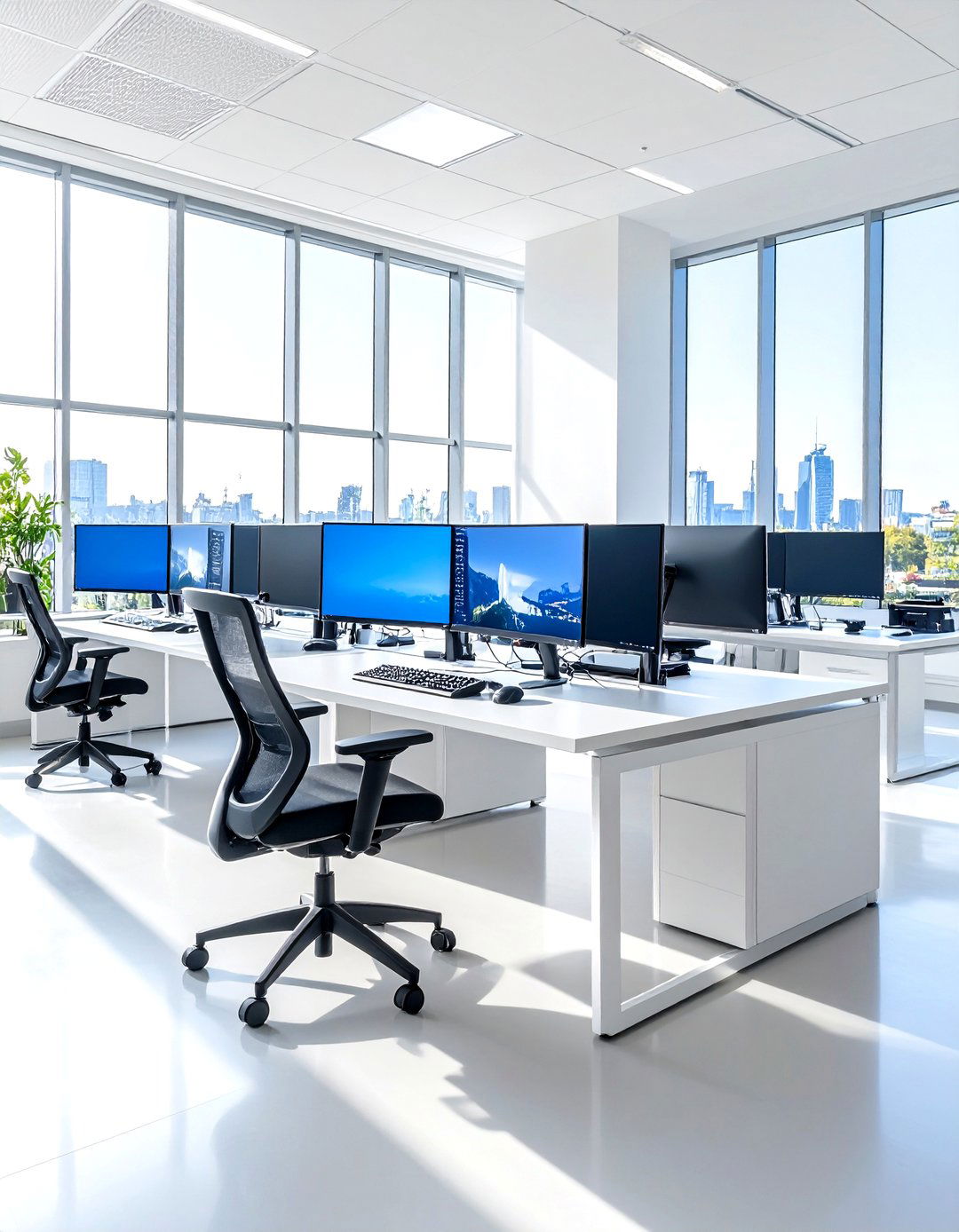
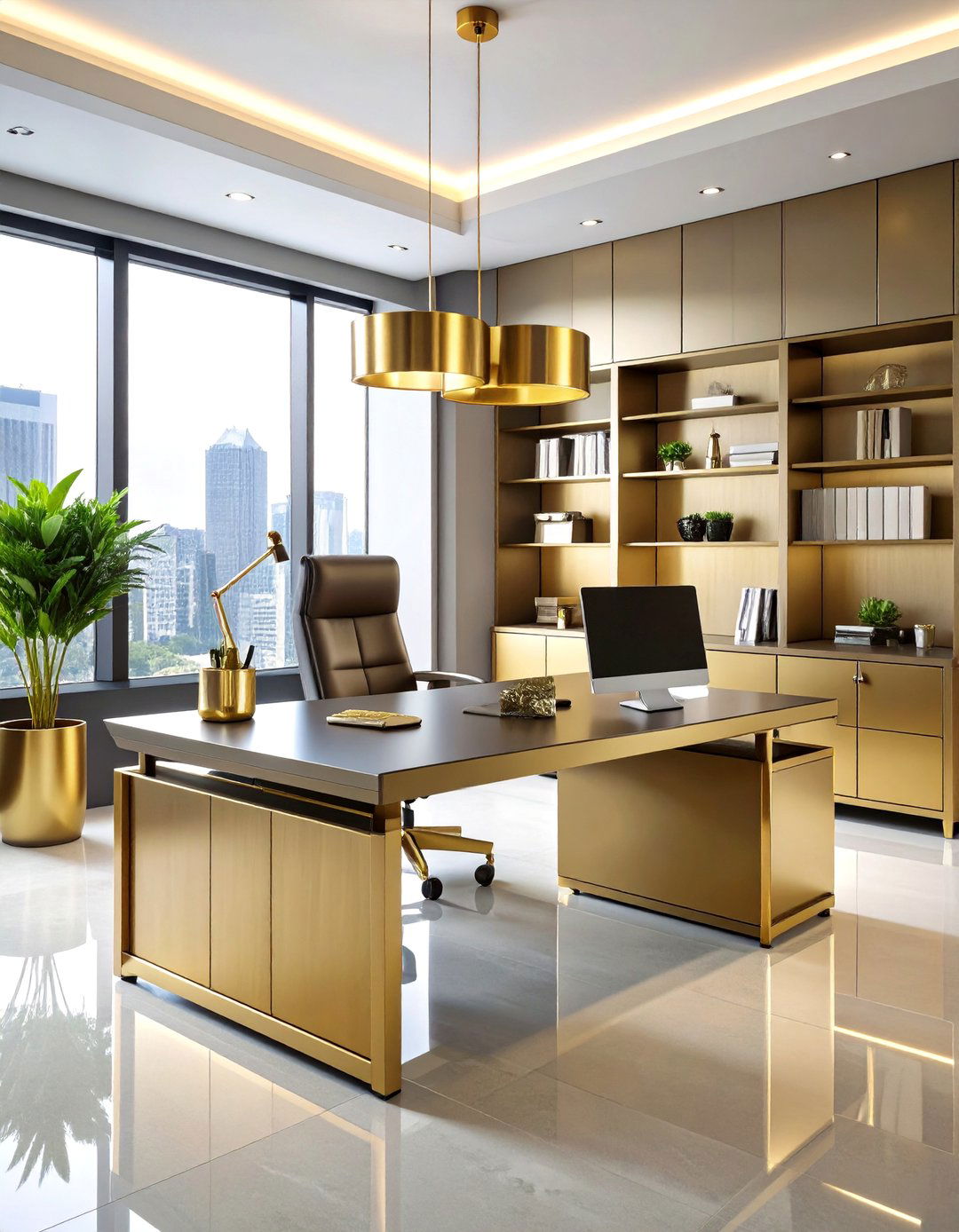
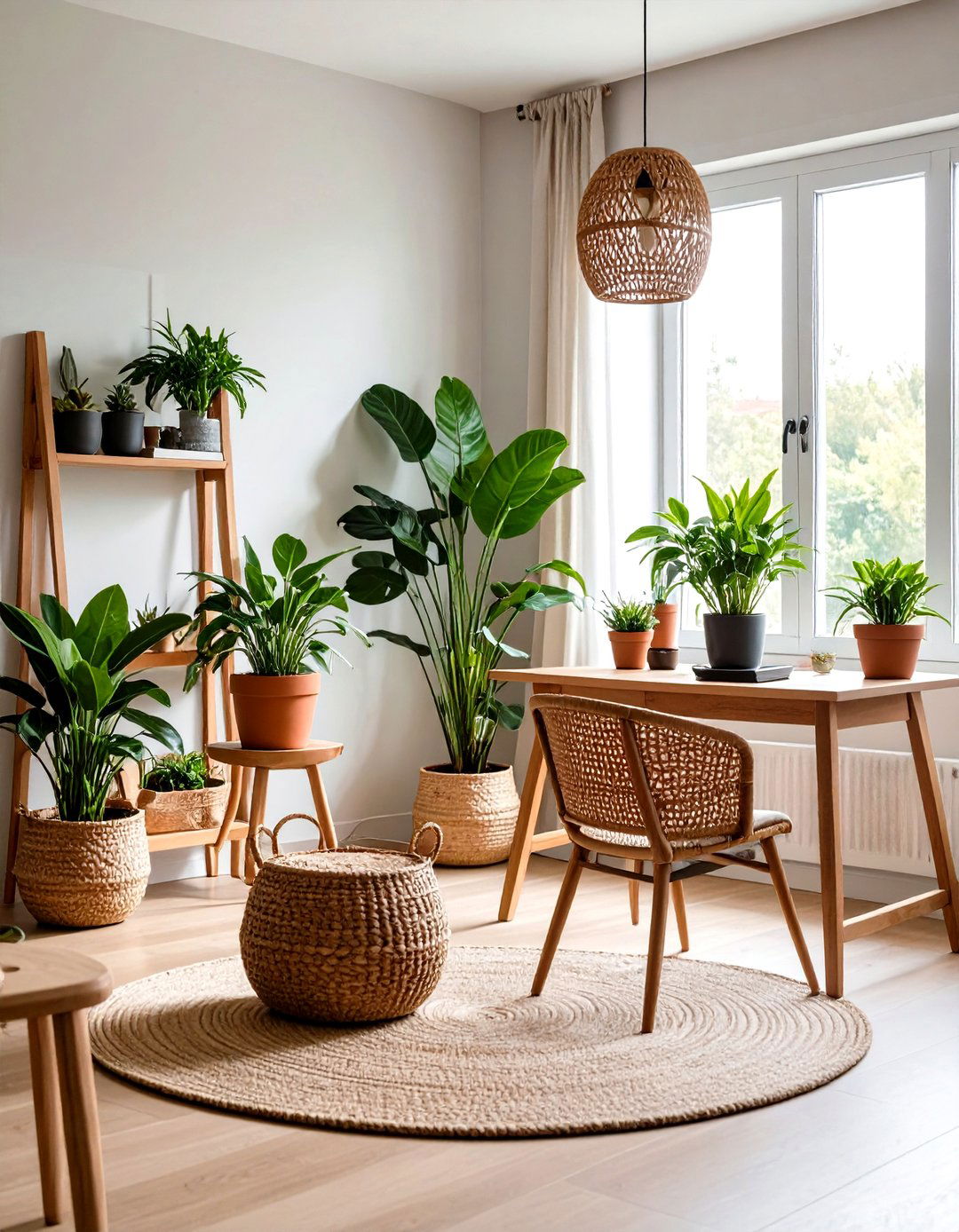
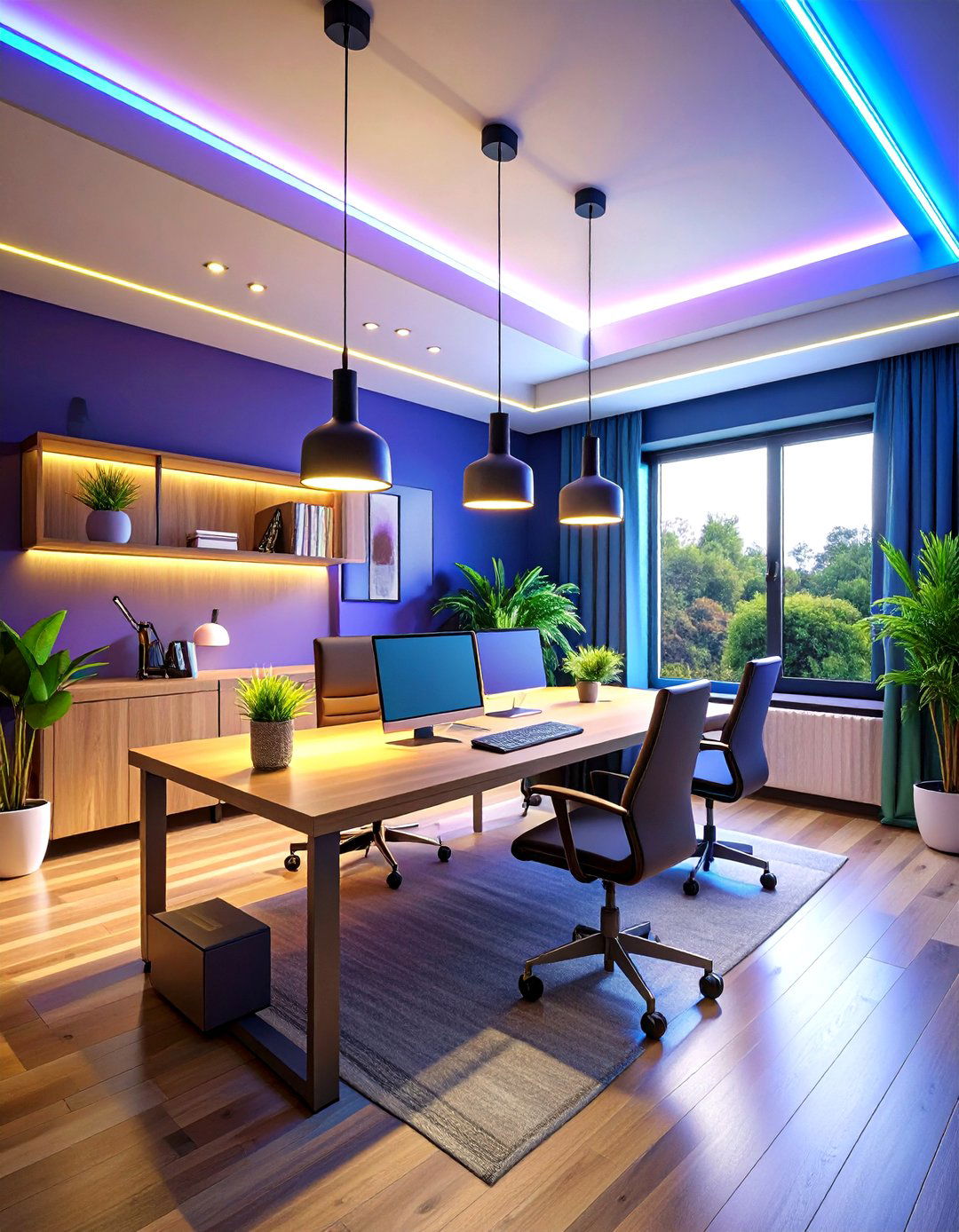
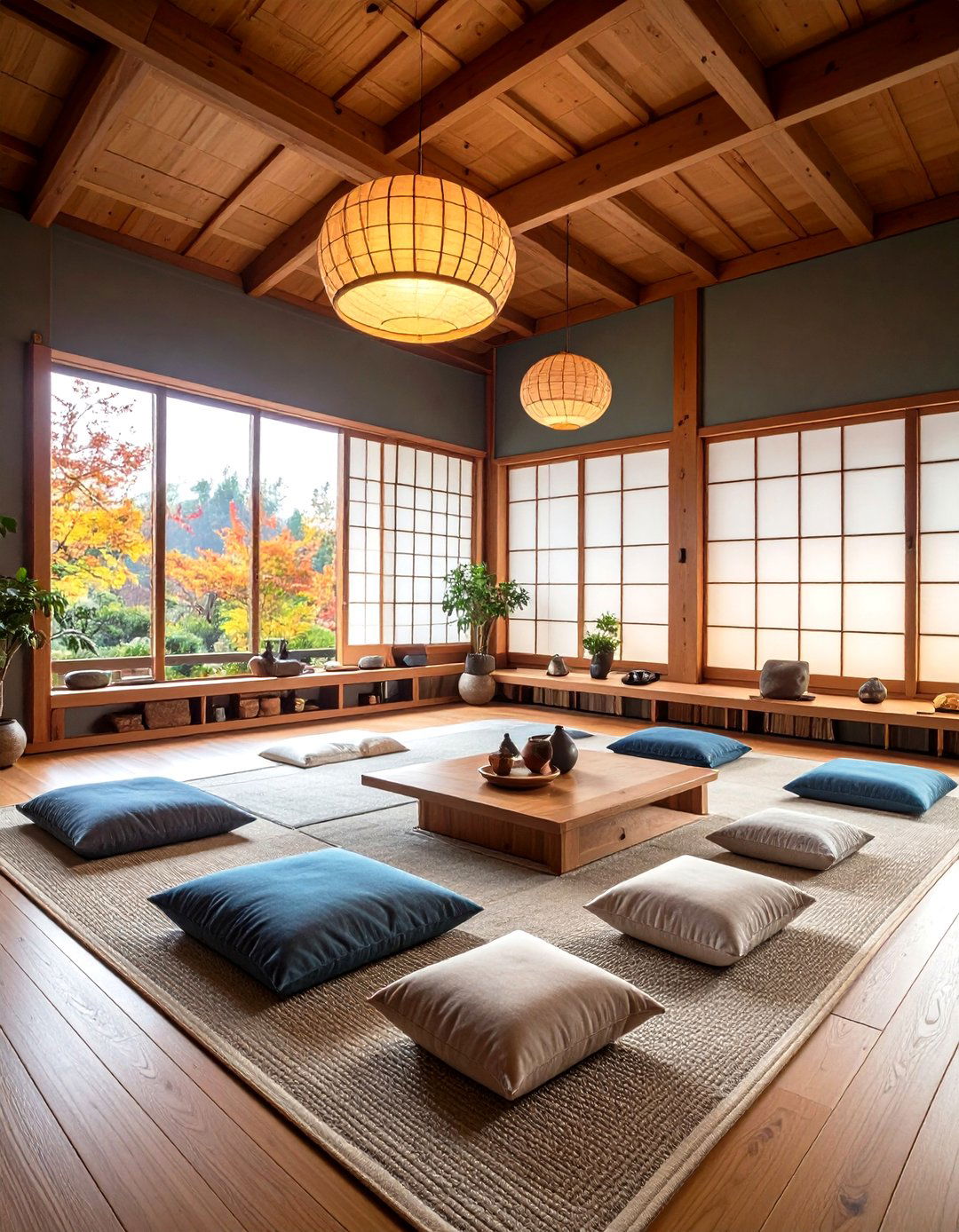
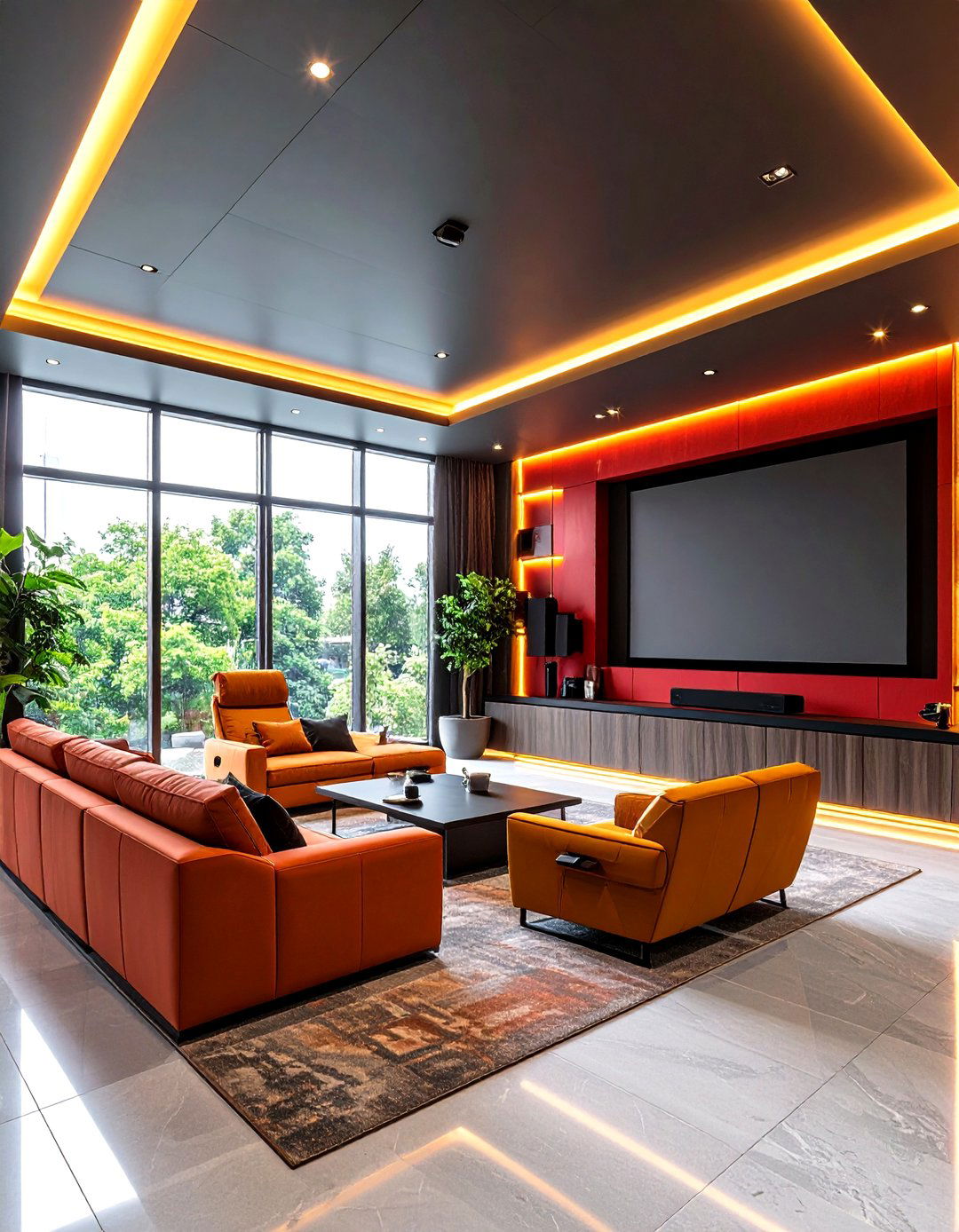
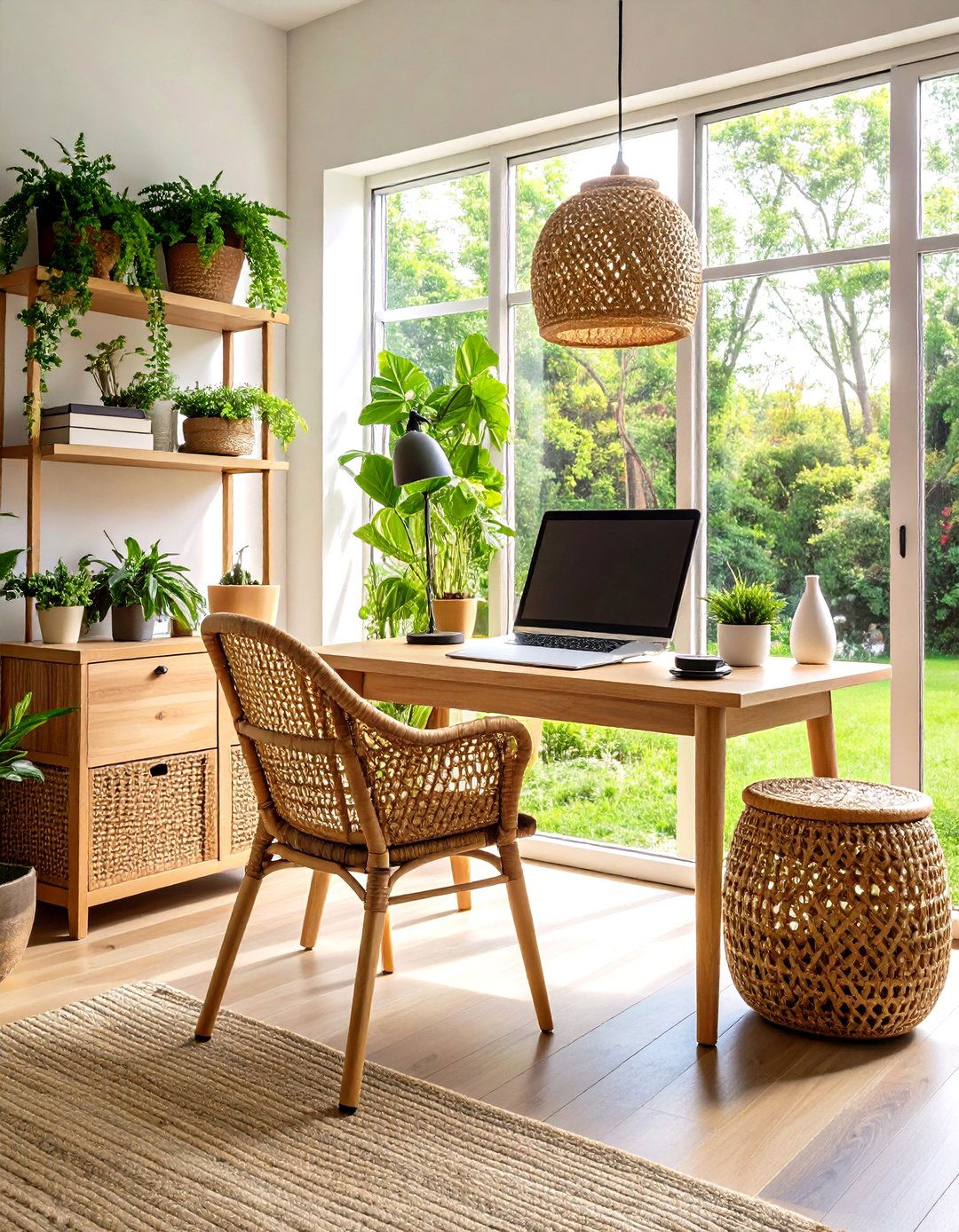
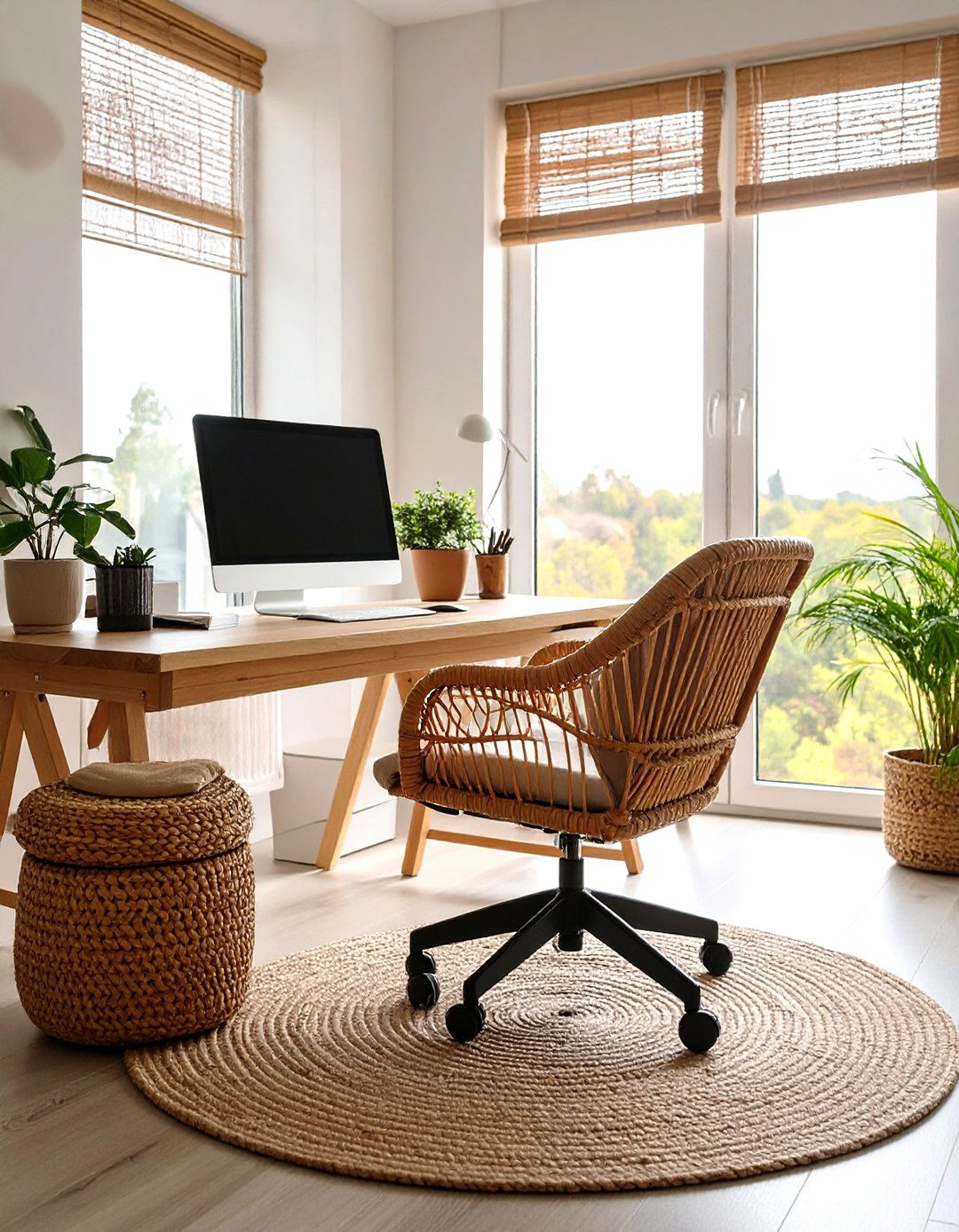

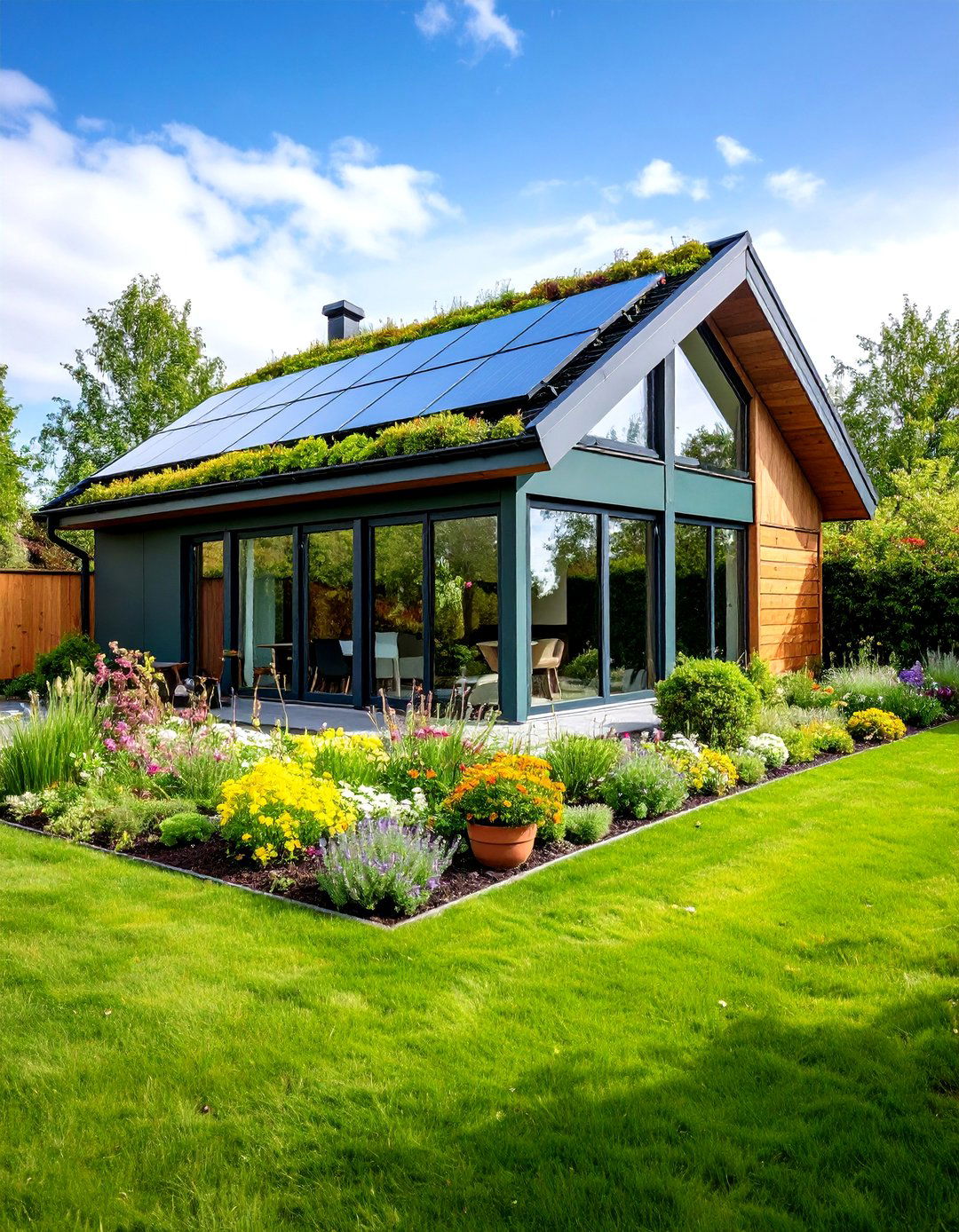

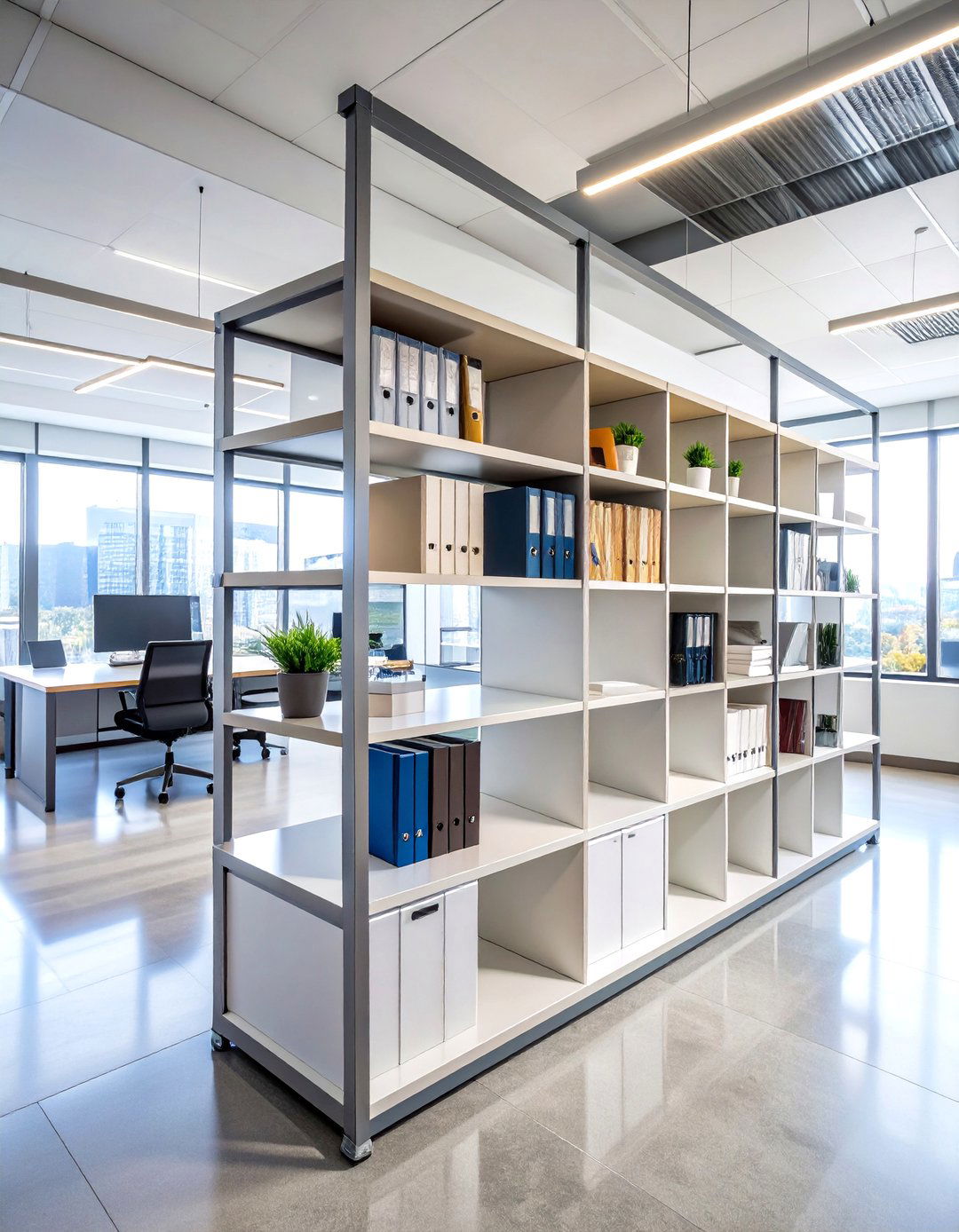
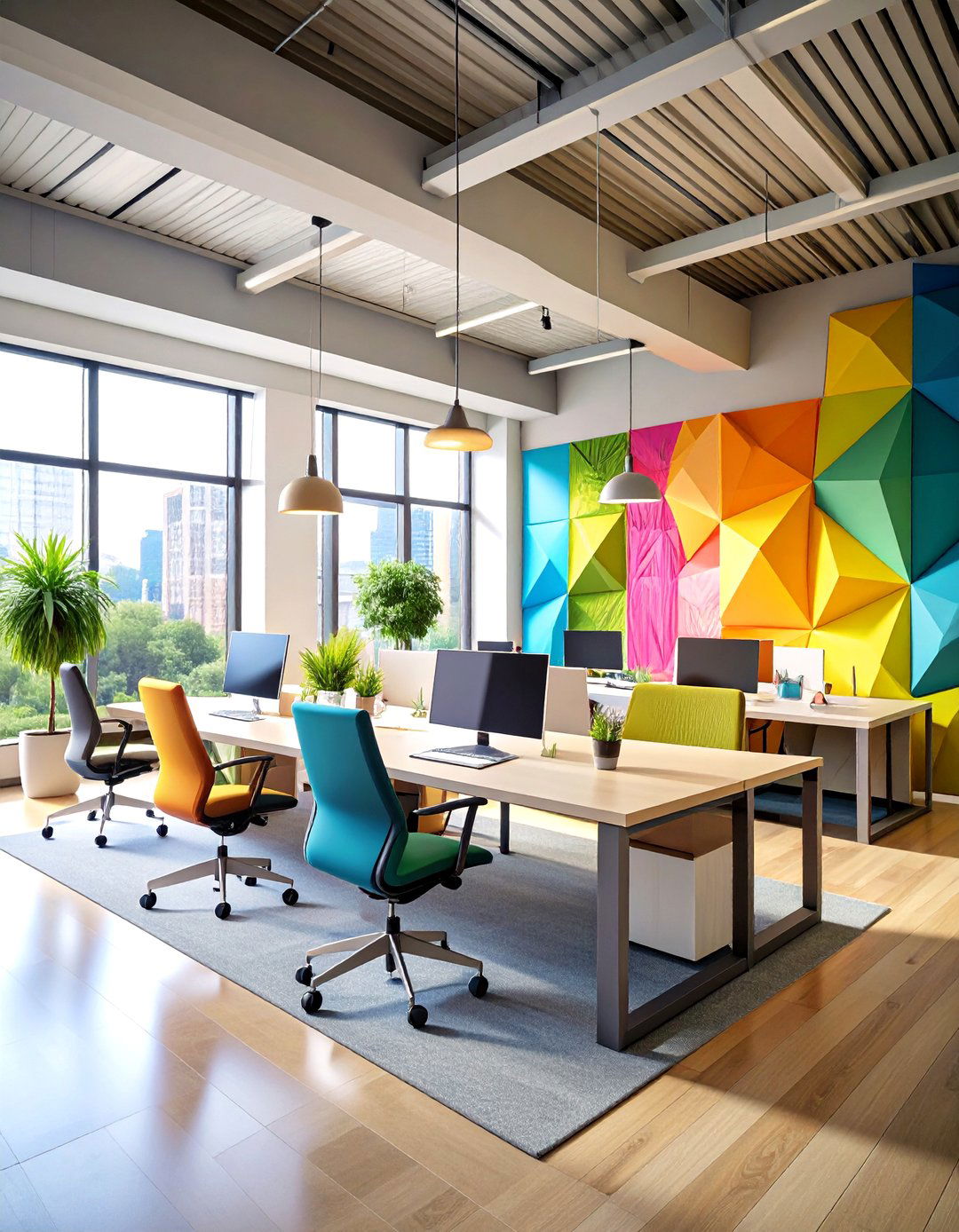
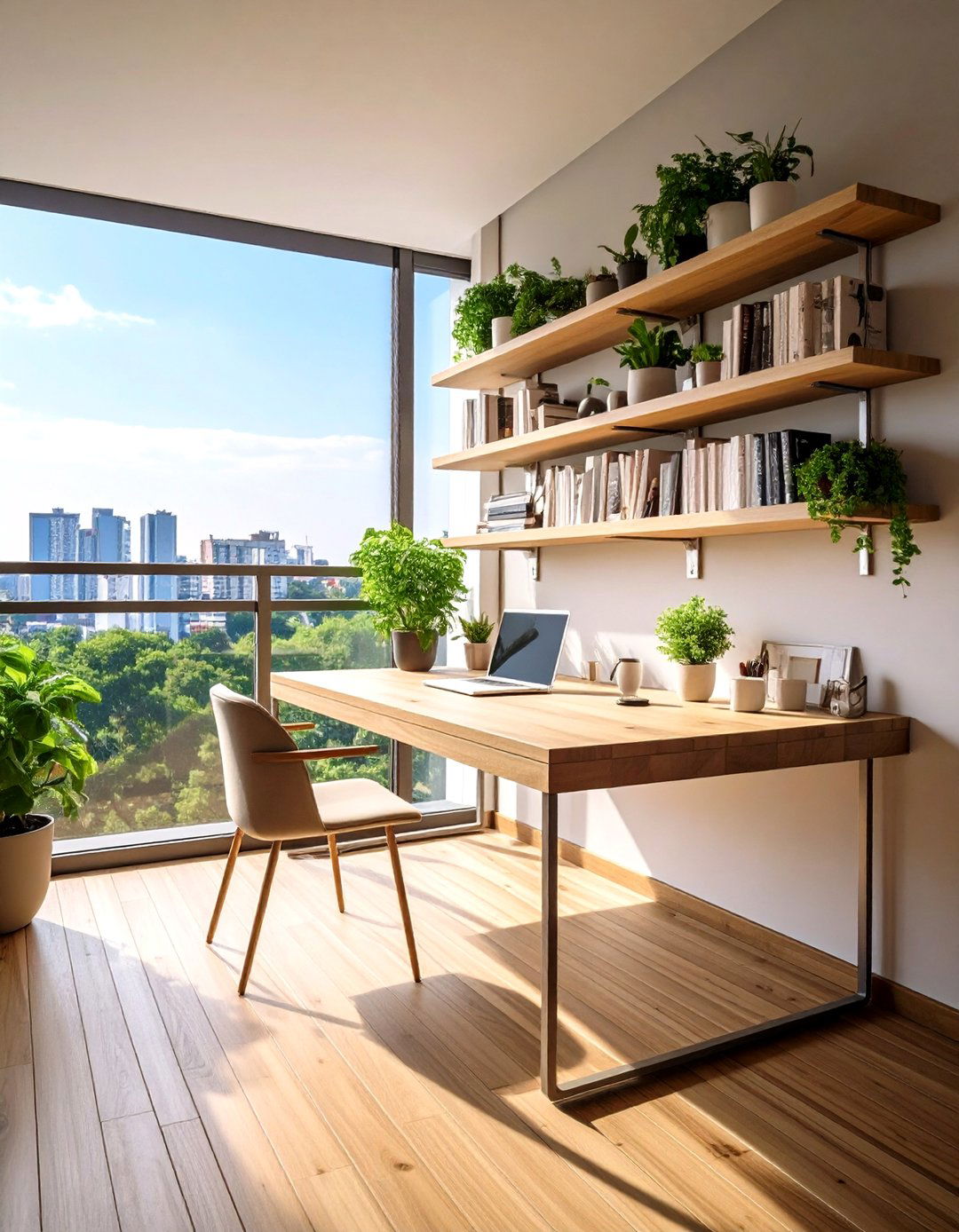
Leave a Reply